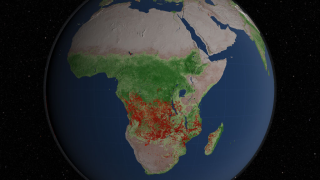African Fire Observations and MODIS NDVI
The visualization shows fires detected in Africa from July 2002 through July 2011. Africa has more abundant burning than any other continent. MODIS observations have shown that some 70 percent of the world's fires occur in Africa alone. "It's incredibly satisfying to see such a long record of fires visualized," said Chris Justice, a scientist from the University of Maryland who leads NASA's effort to use MODIS data to study the world's fires. "It's not only exciting visually, but what you see here is a very good representation of the data scientists use to understand the global distribution of fires and to determine where and how fires are responding to climate change and population growth."
More information on the Fire Information for Resource Management (FIRMS) is available at http://maps.geog.umd.edu/firms/.

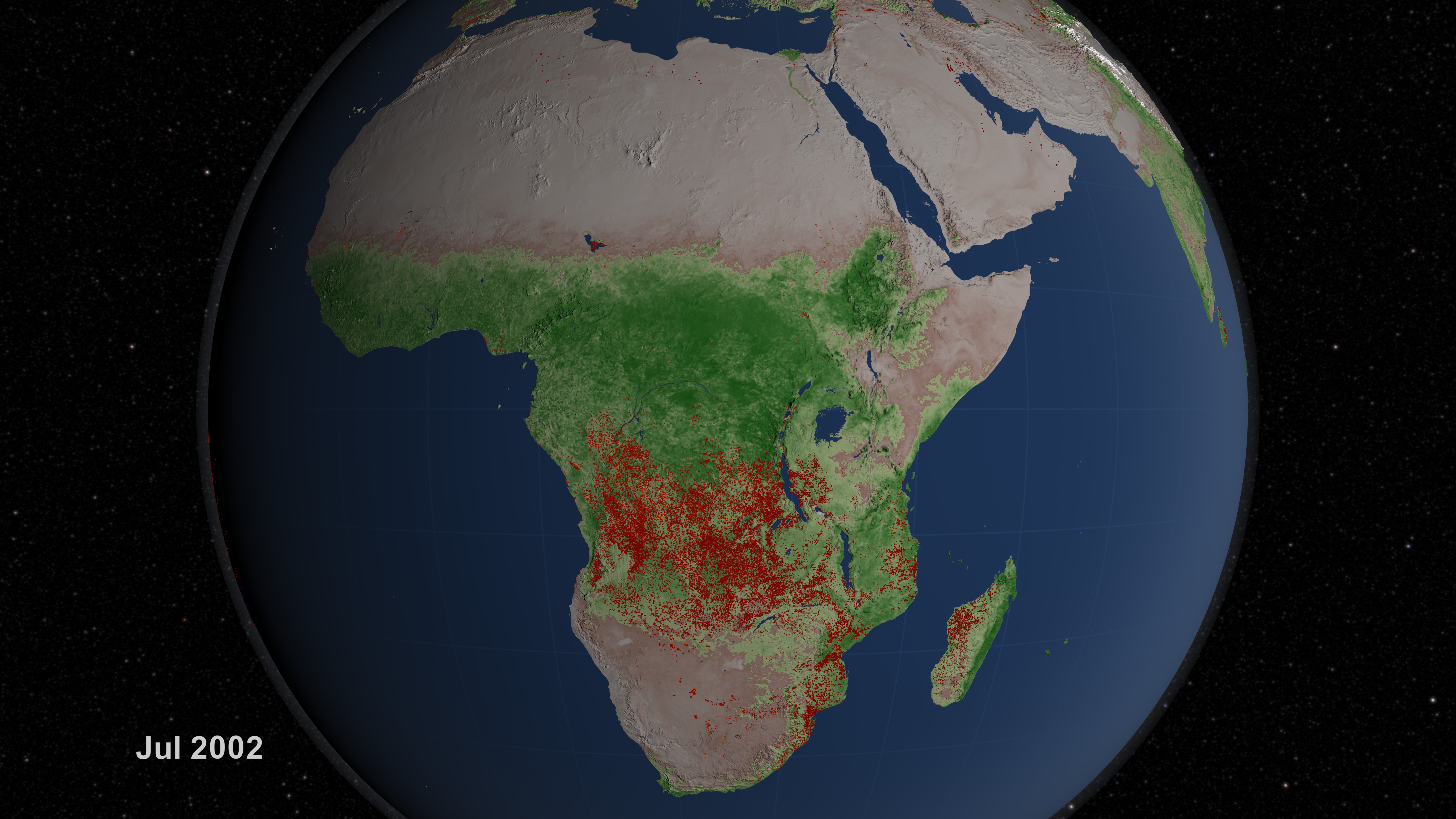
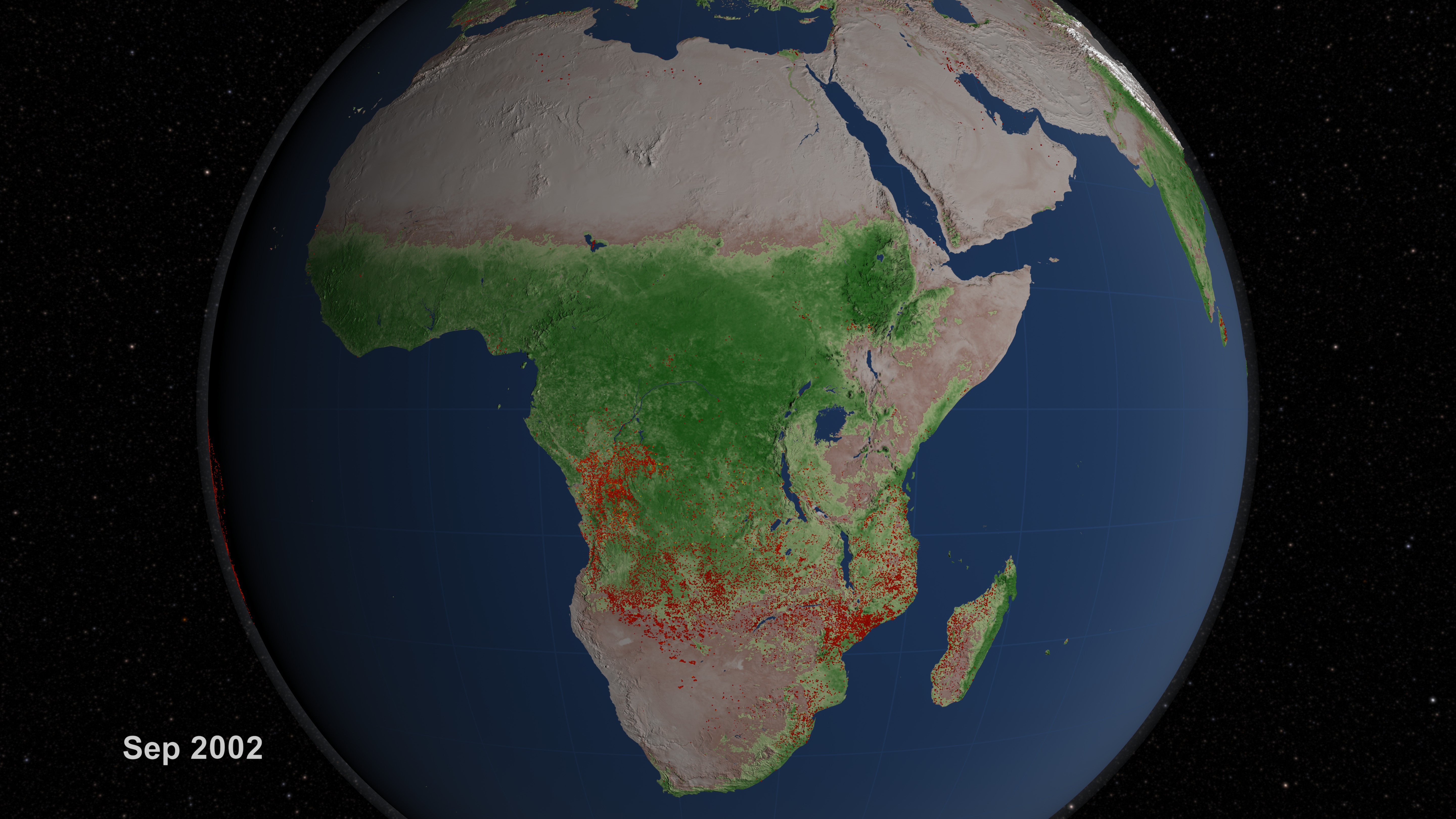
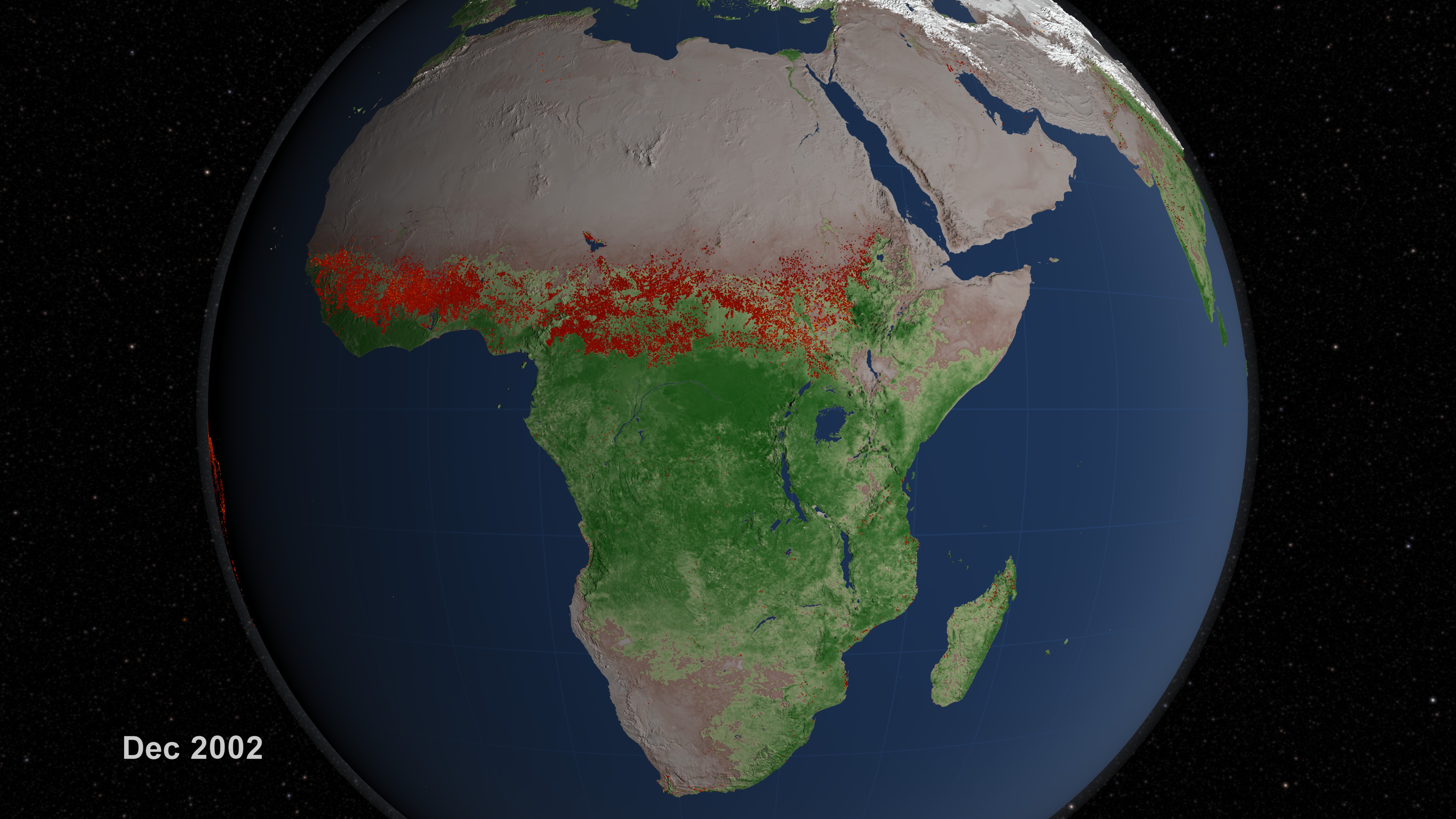
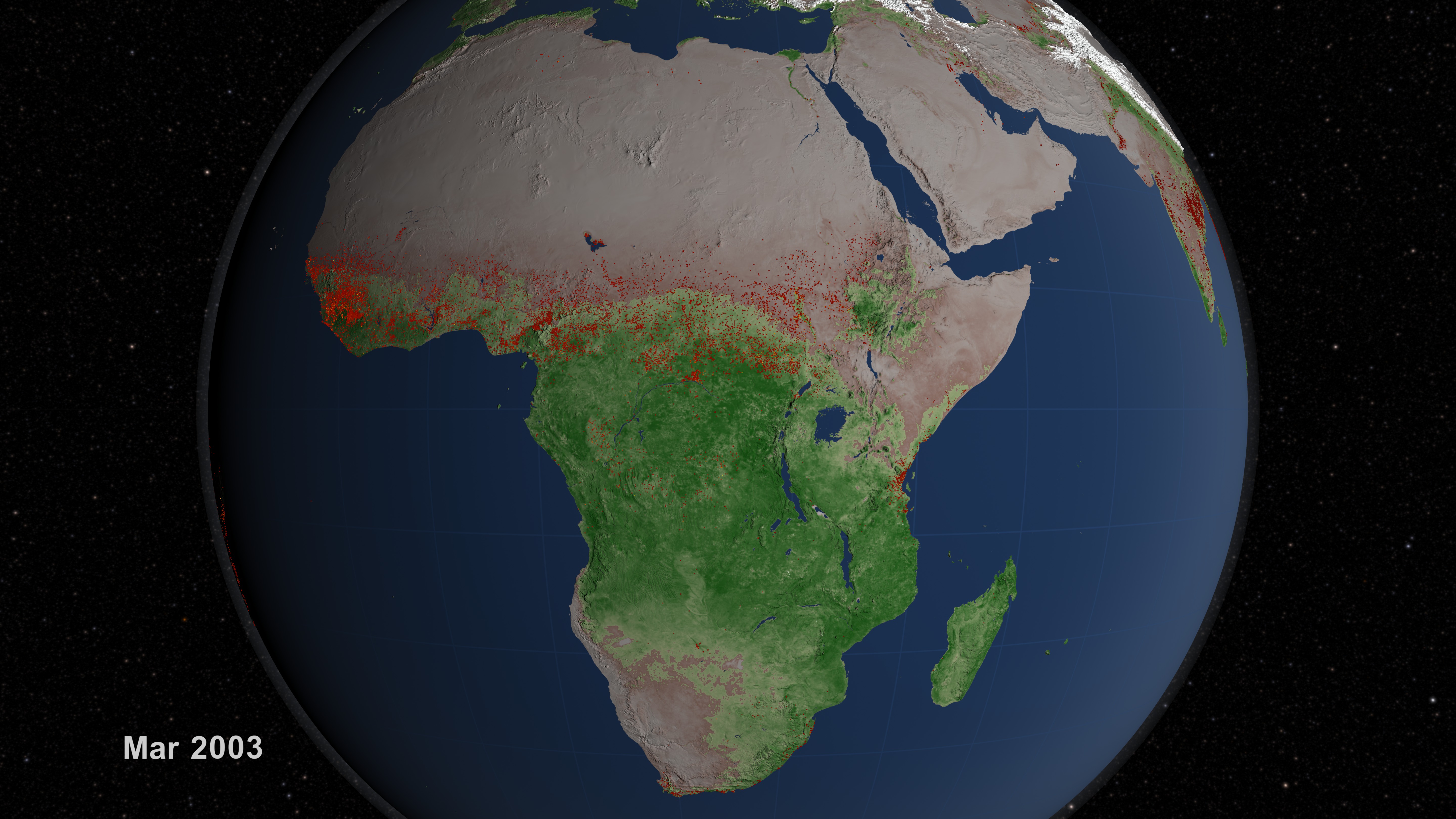
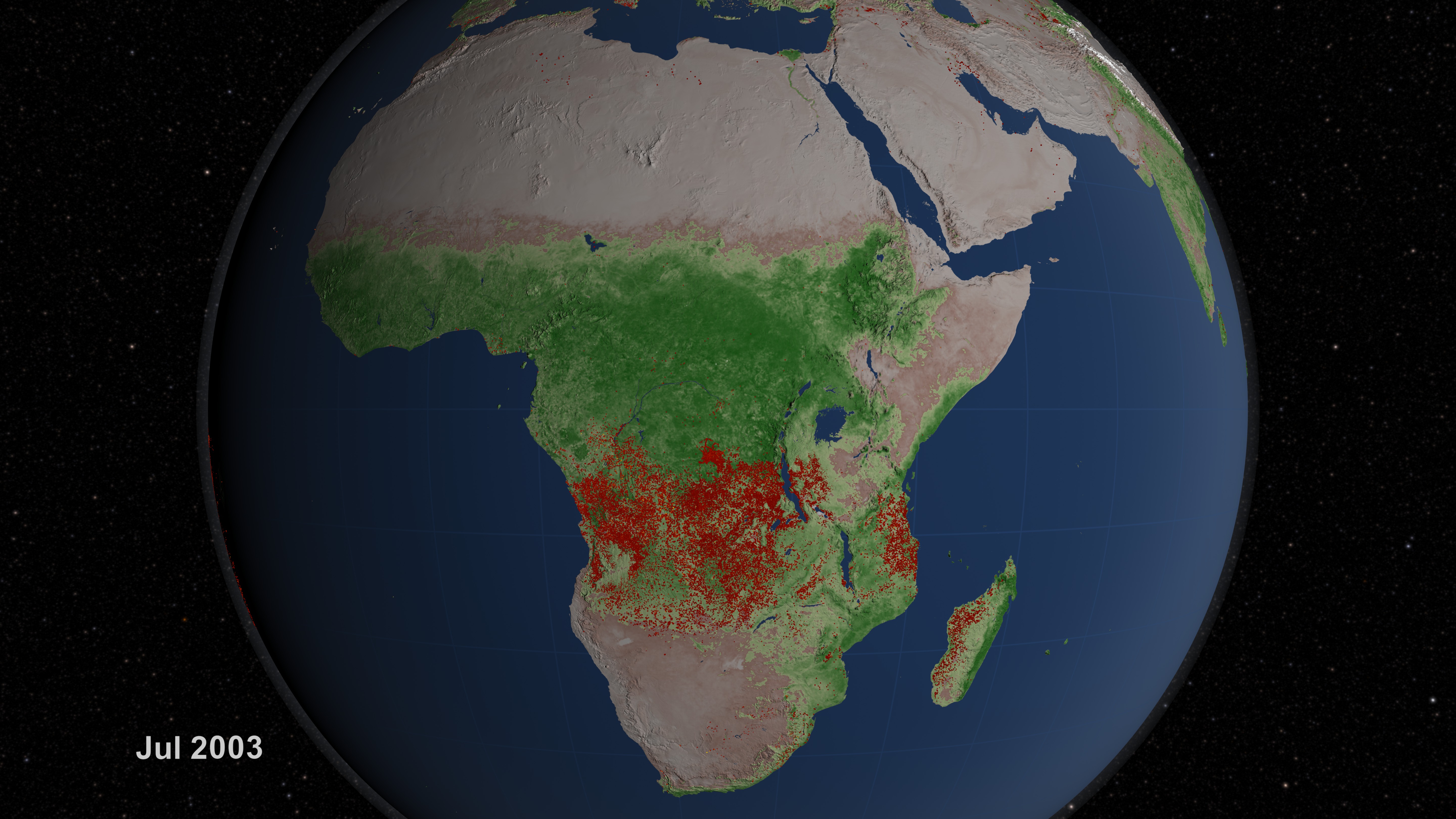
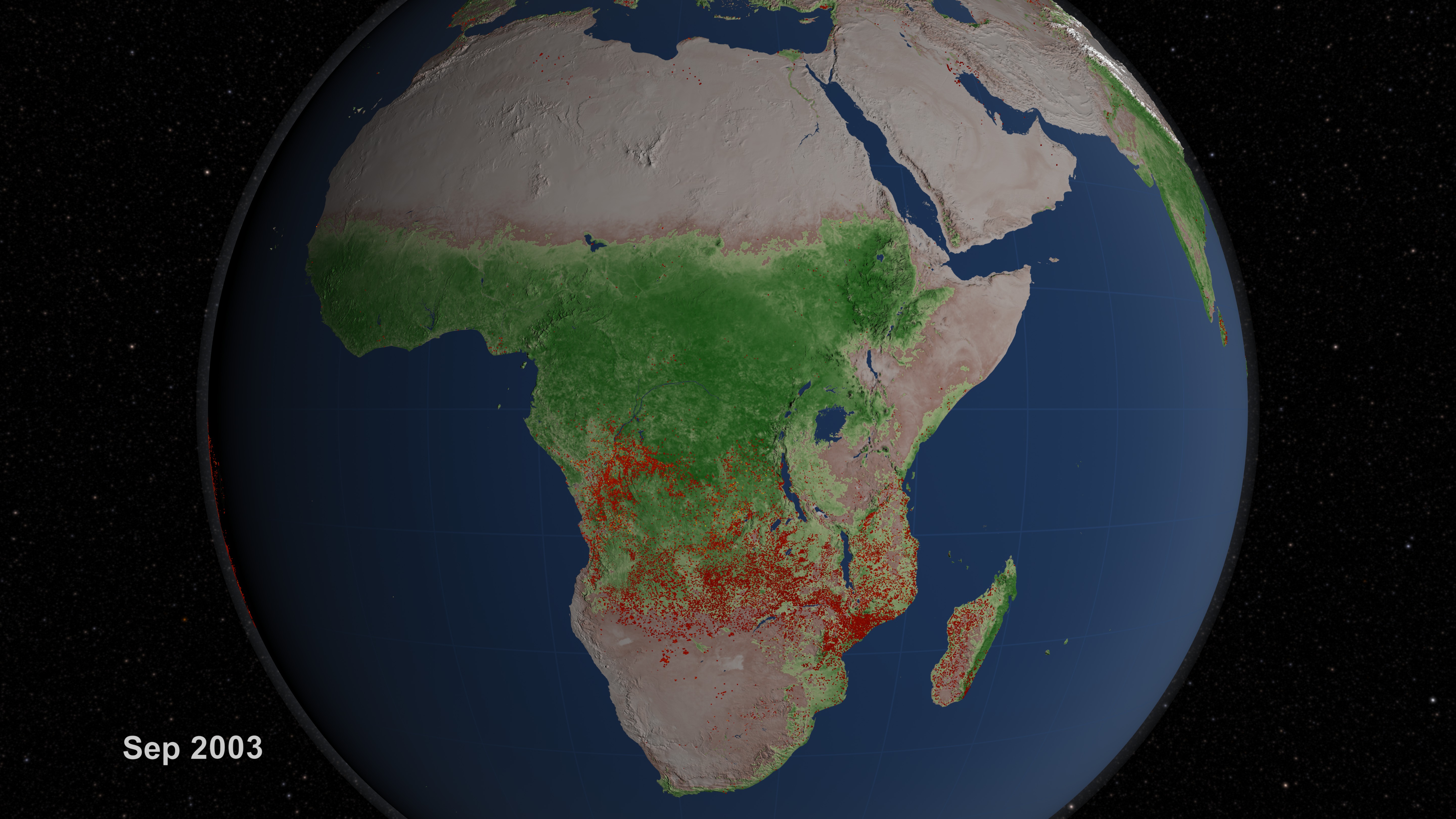
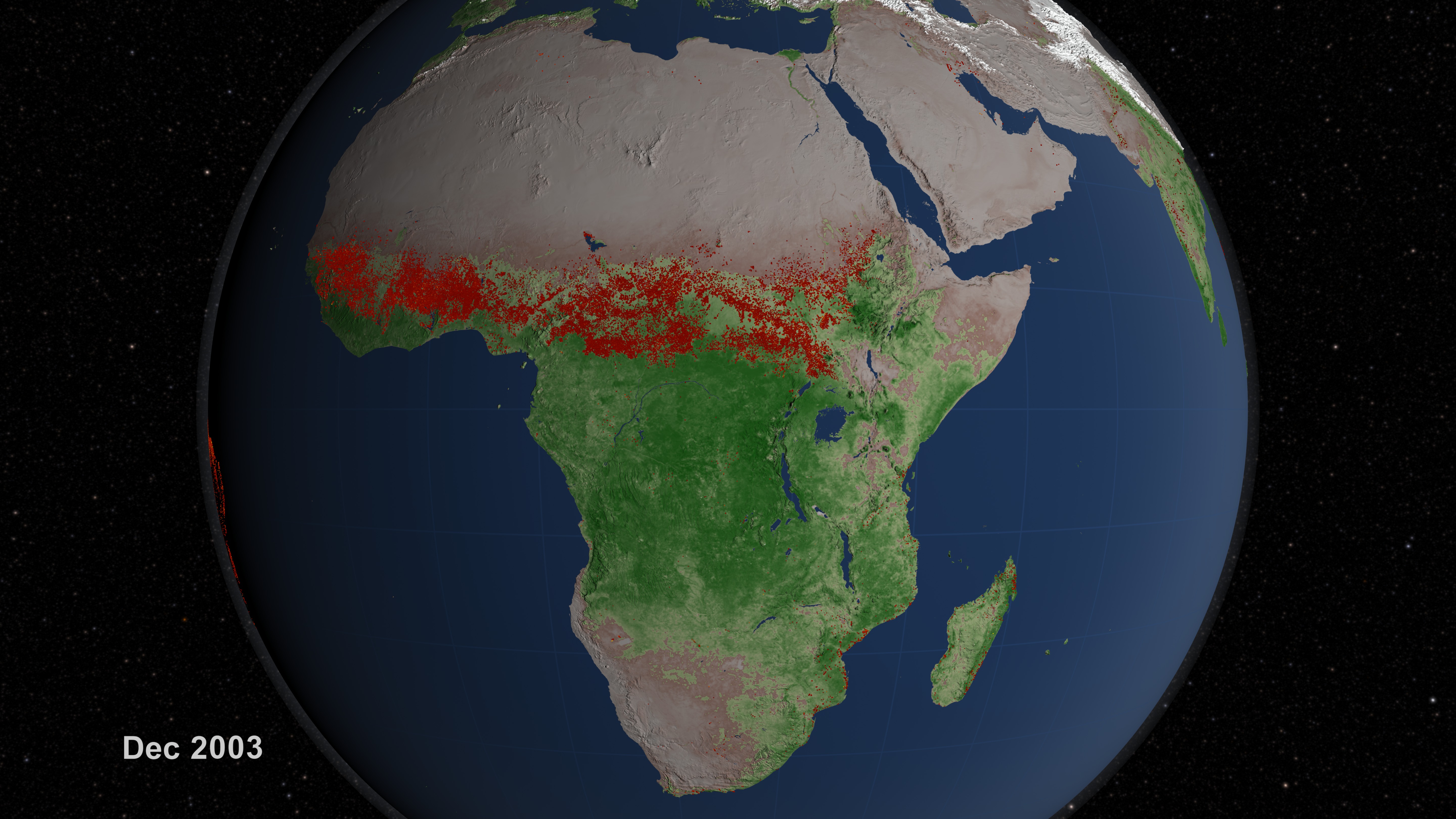
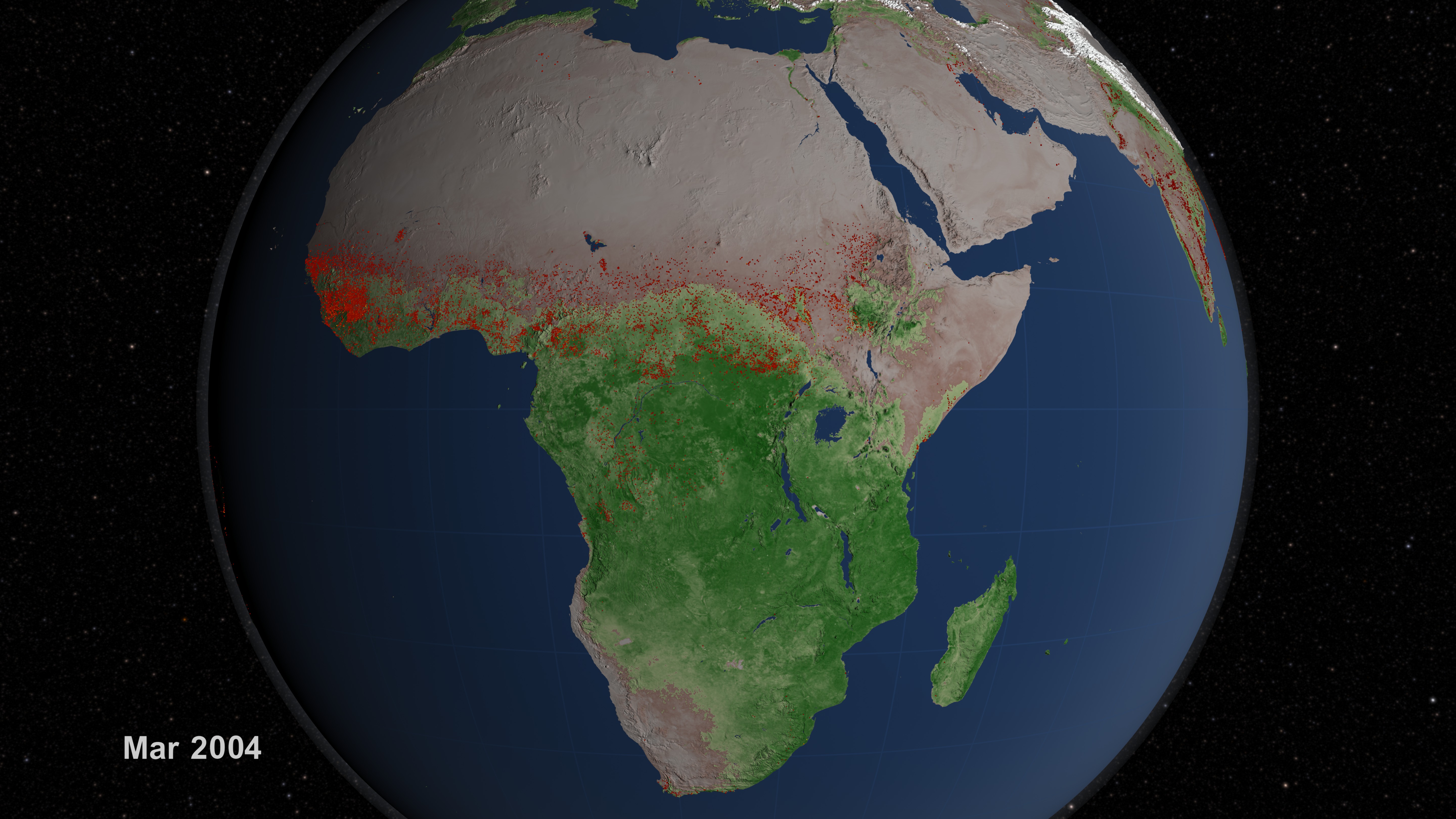
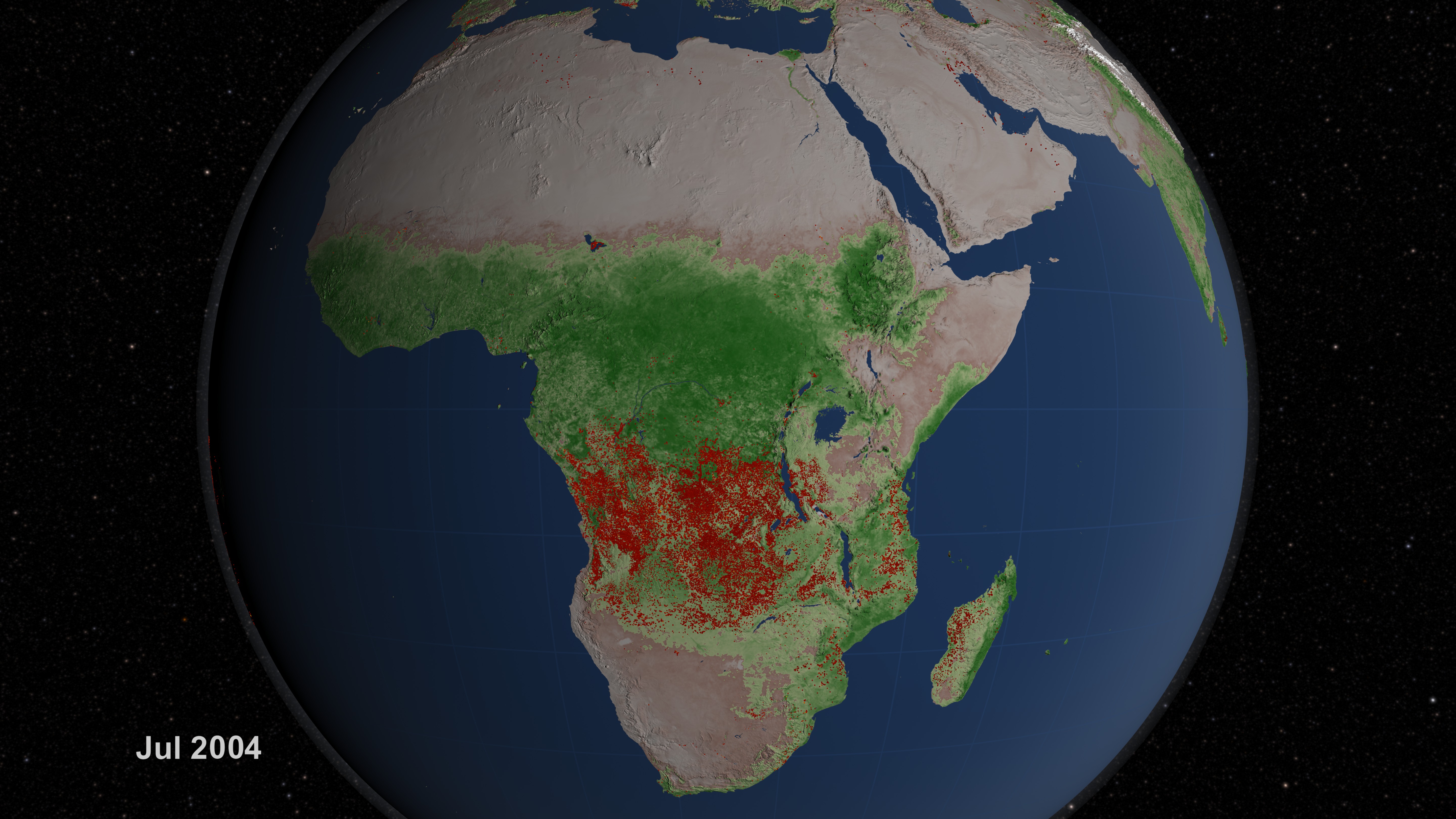
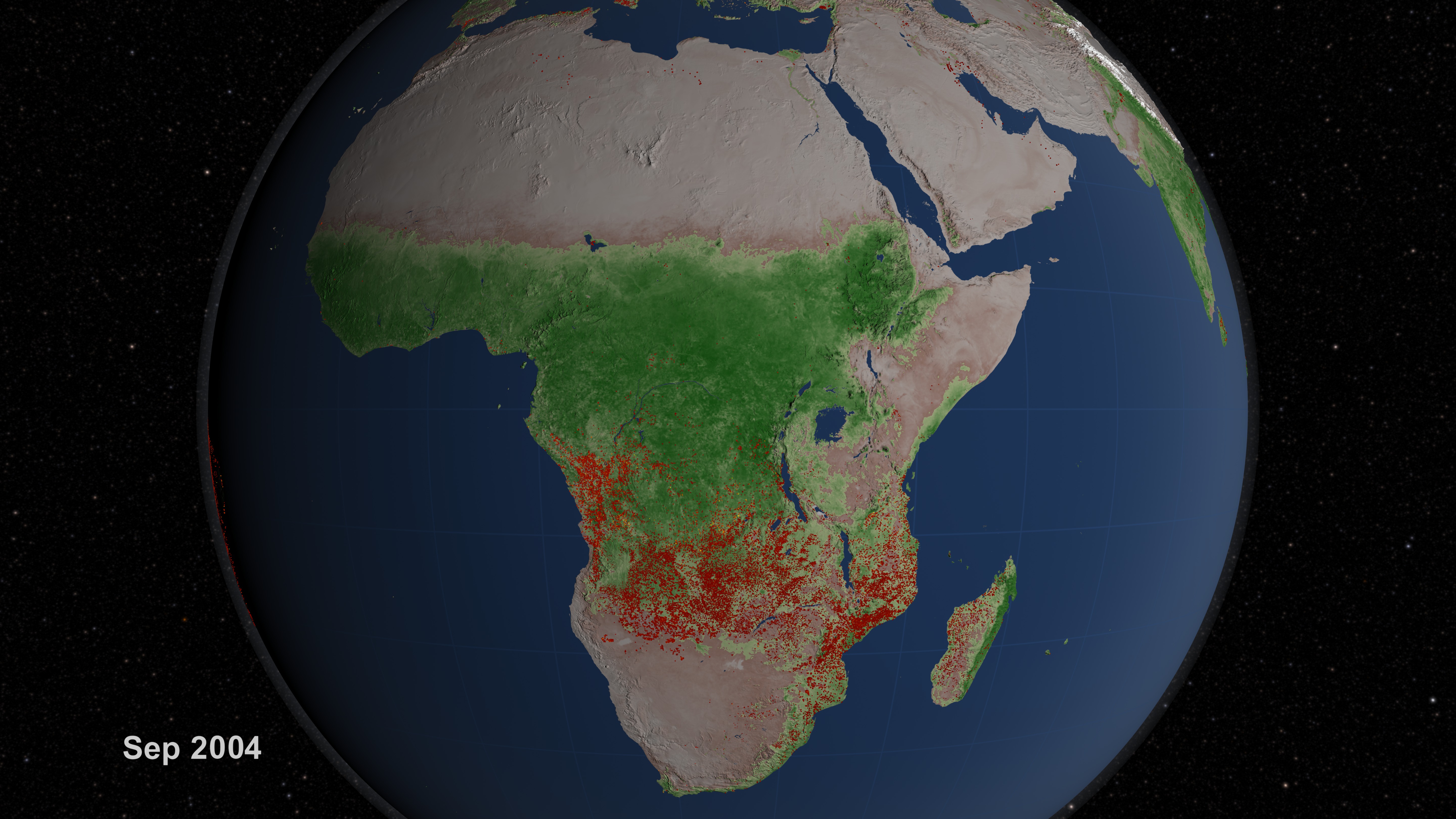
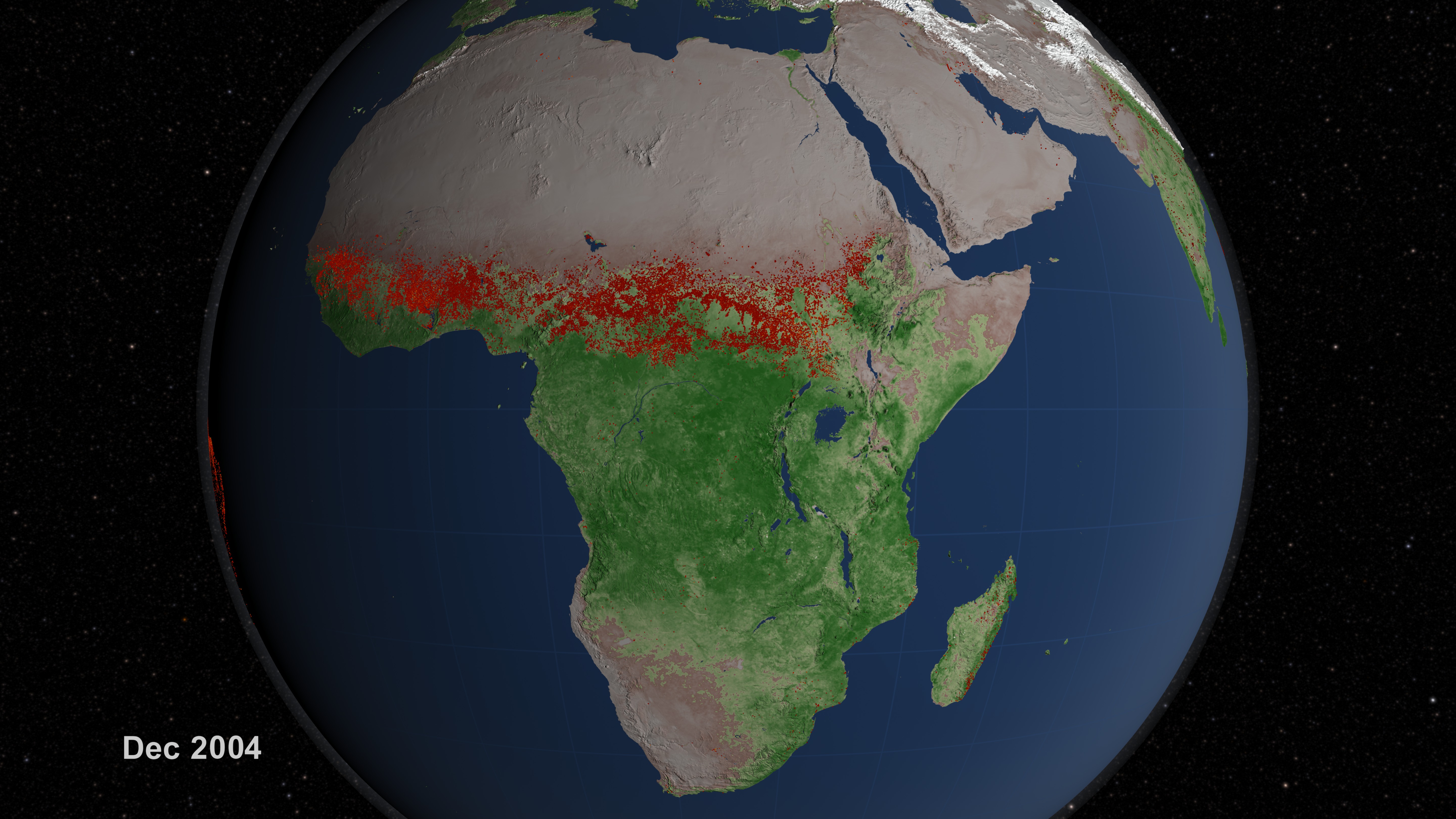
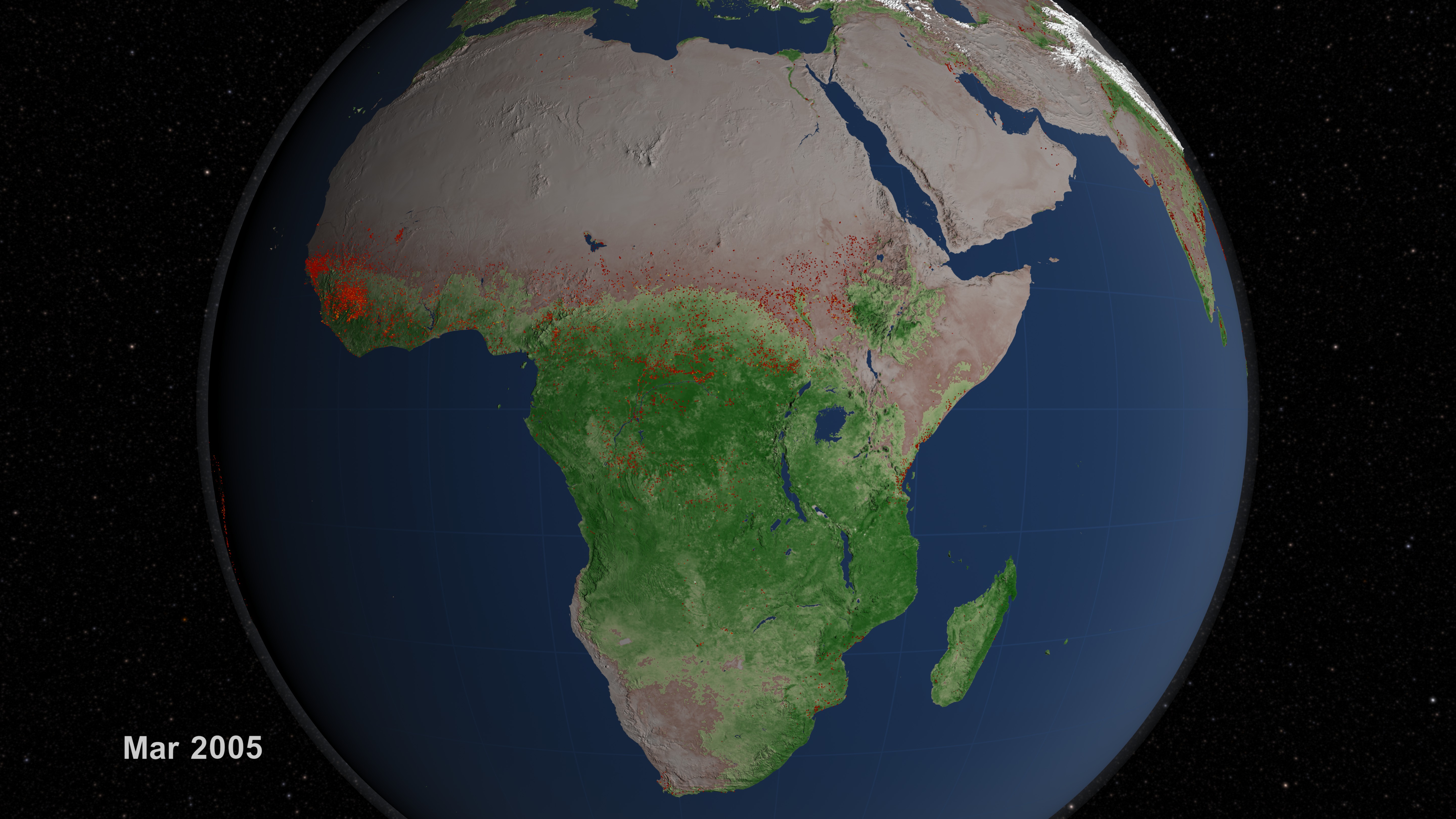
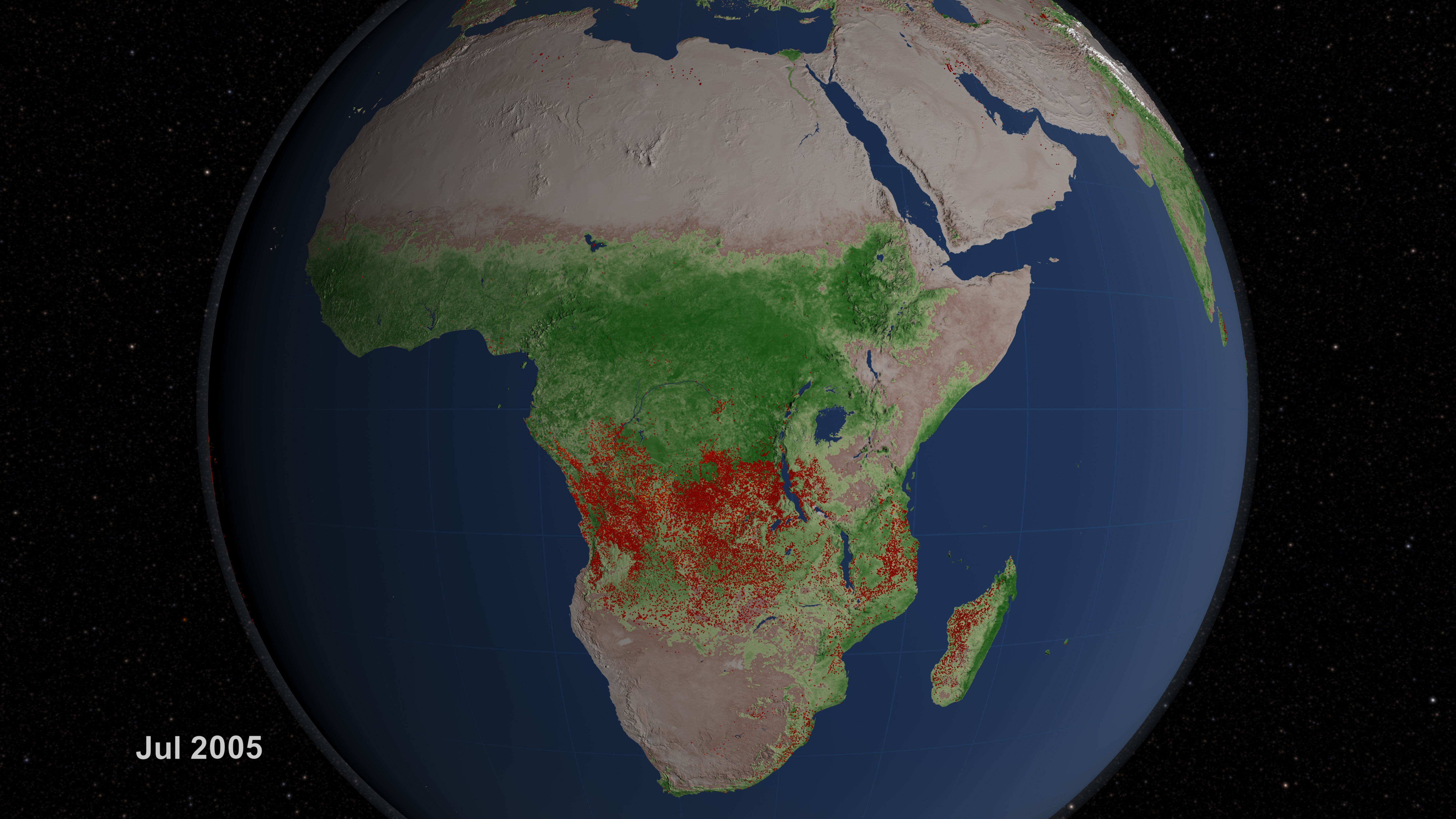
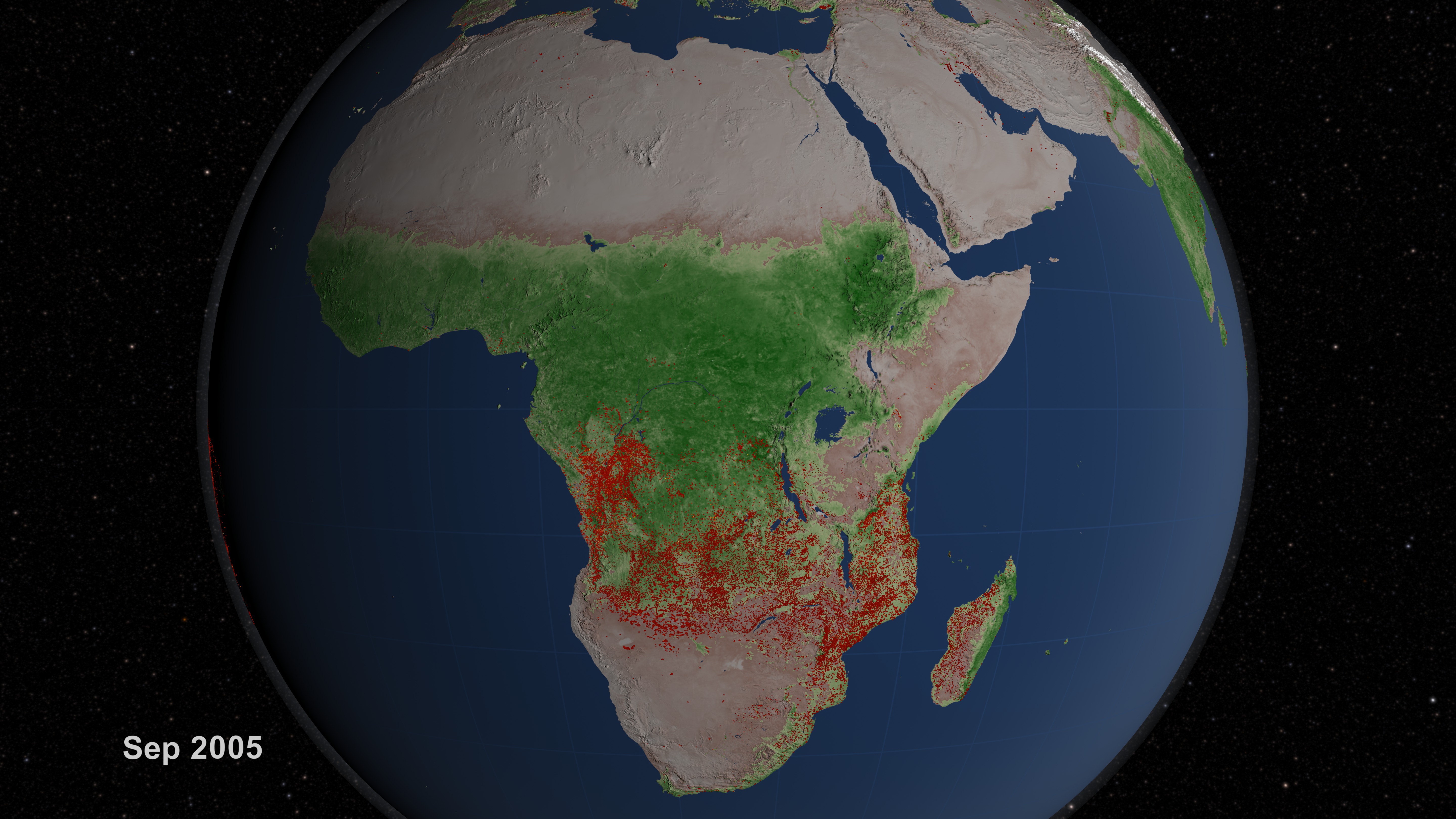
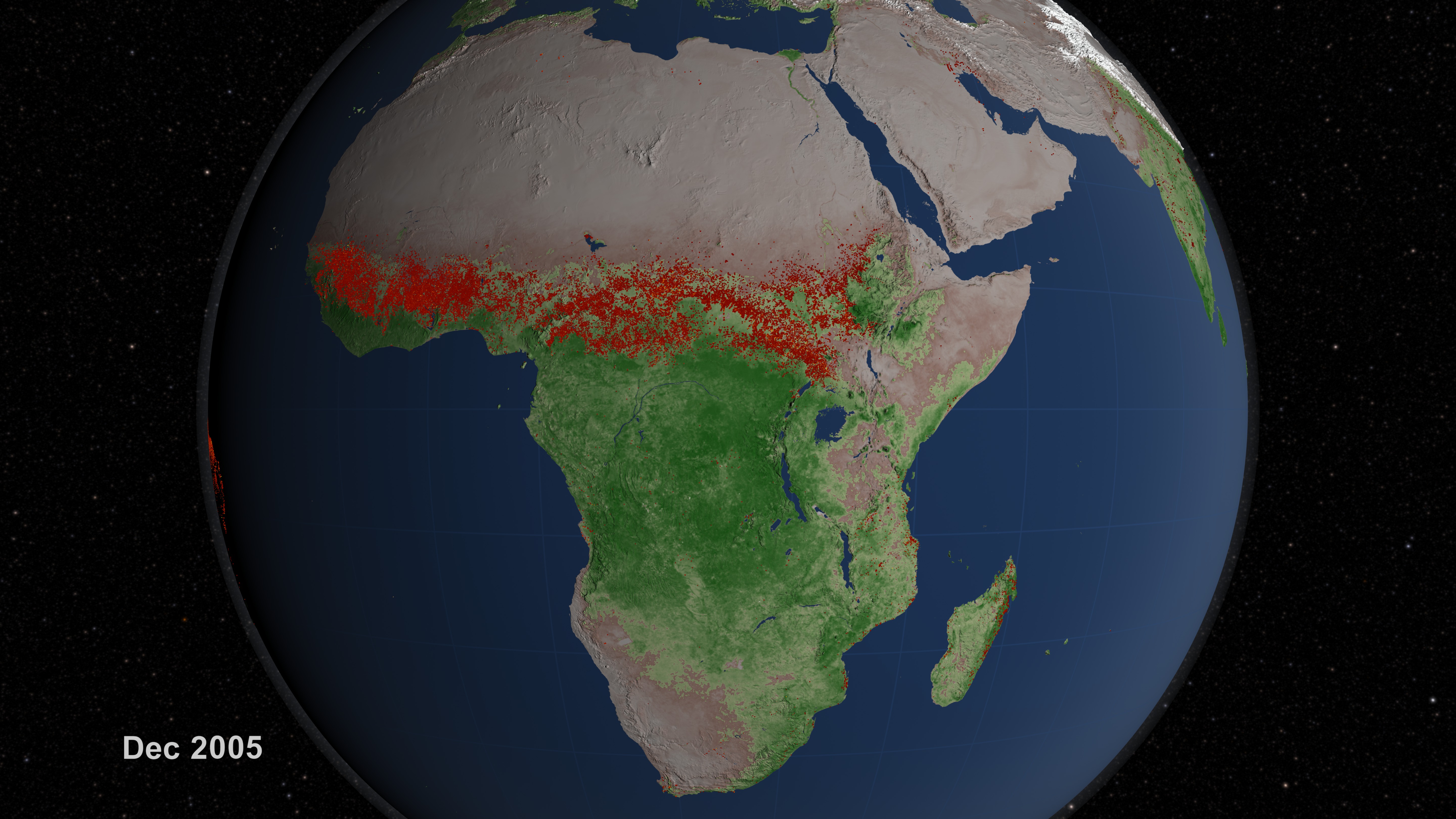
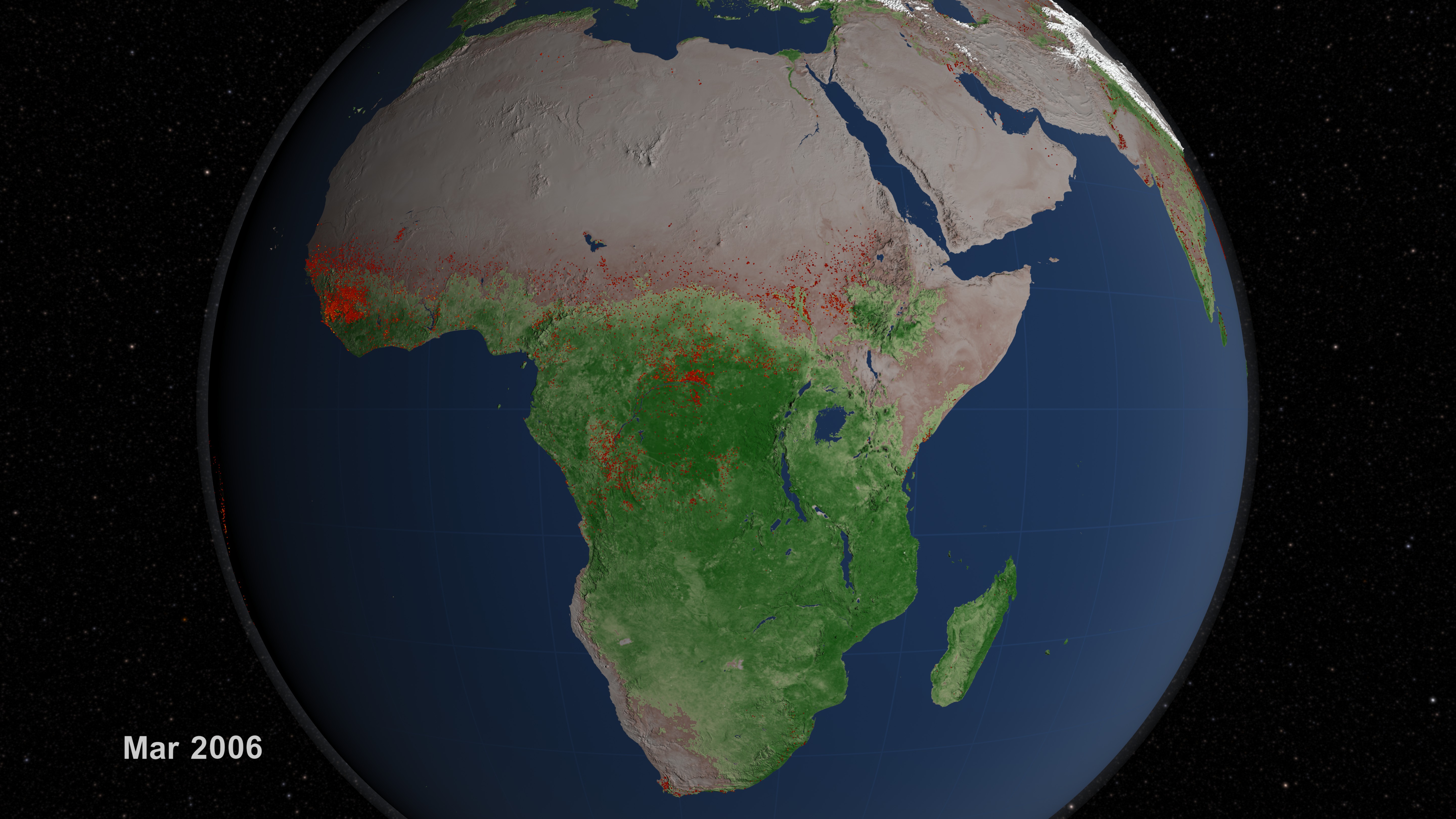
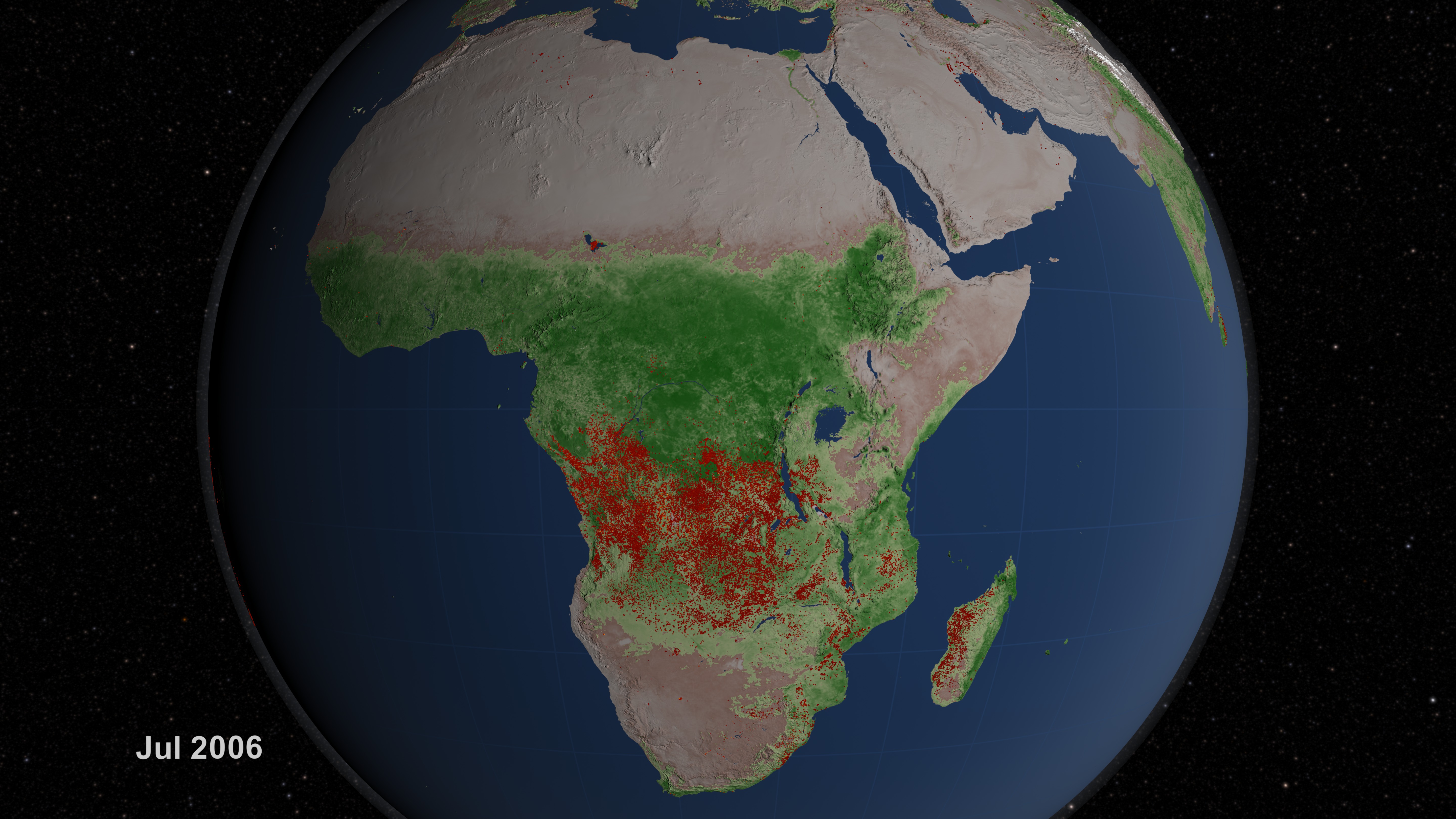
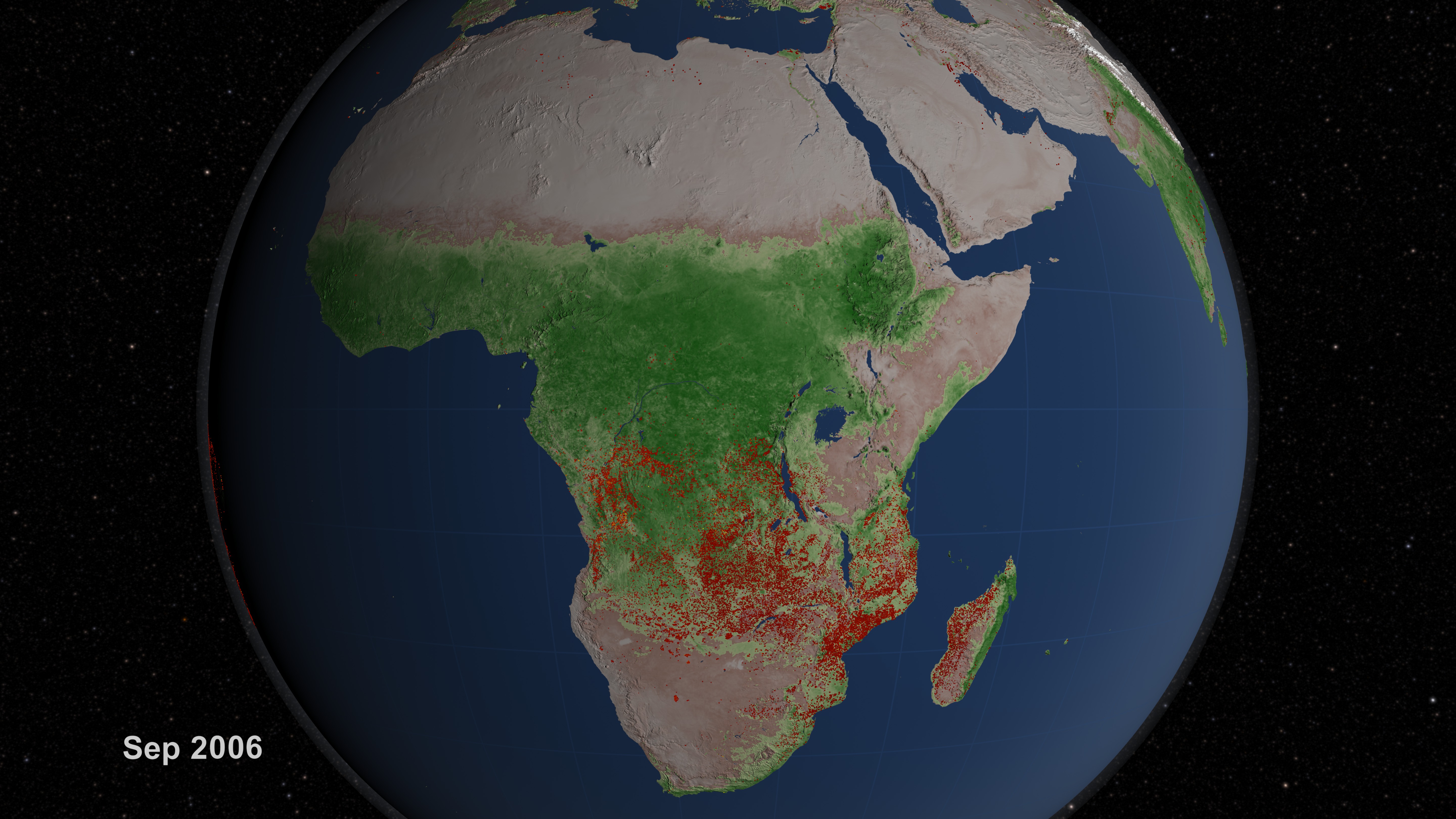
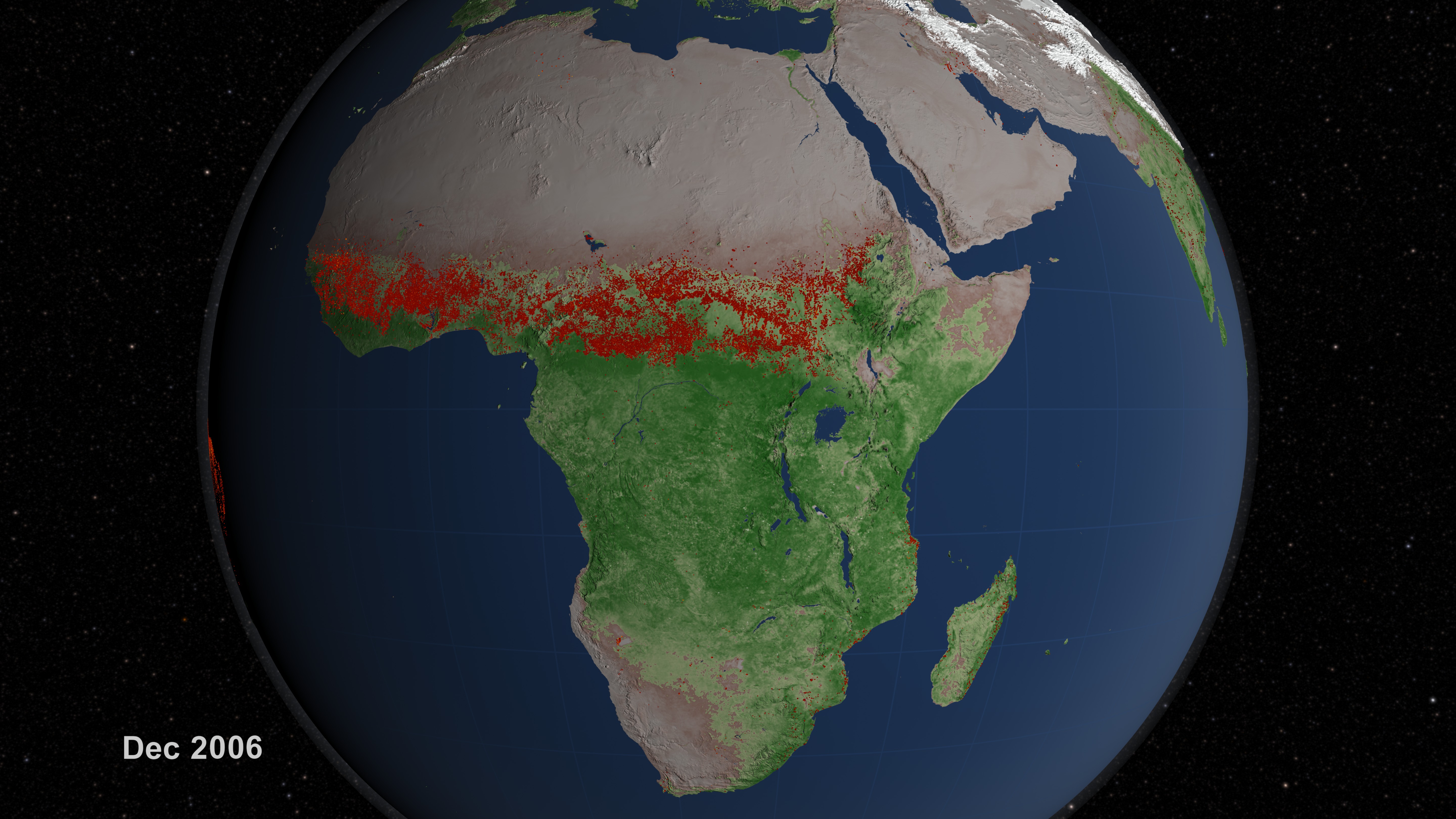
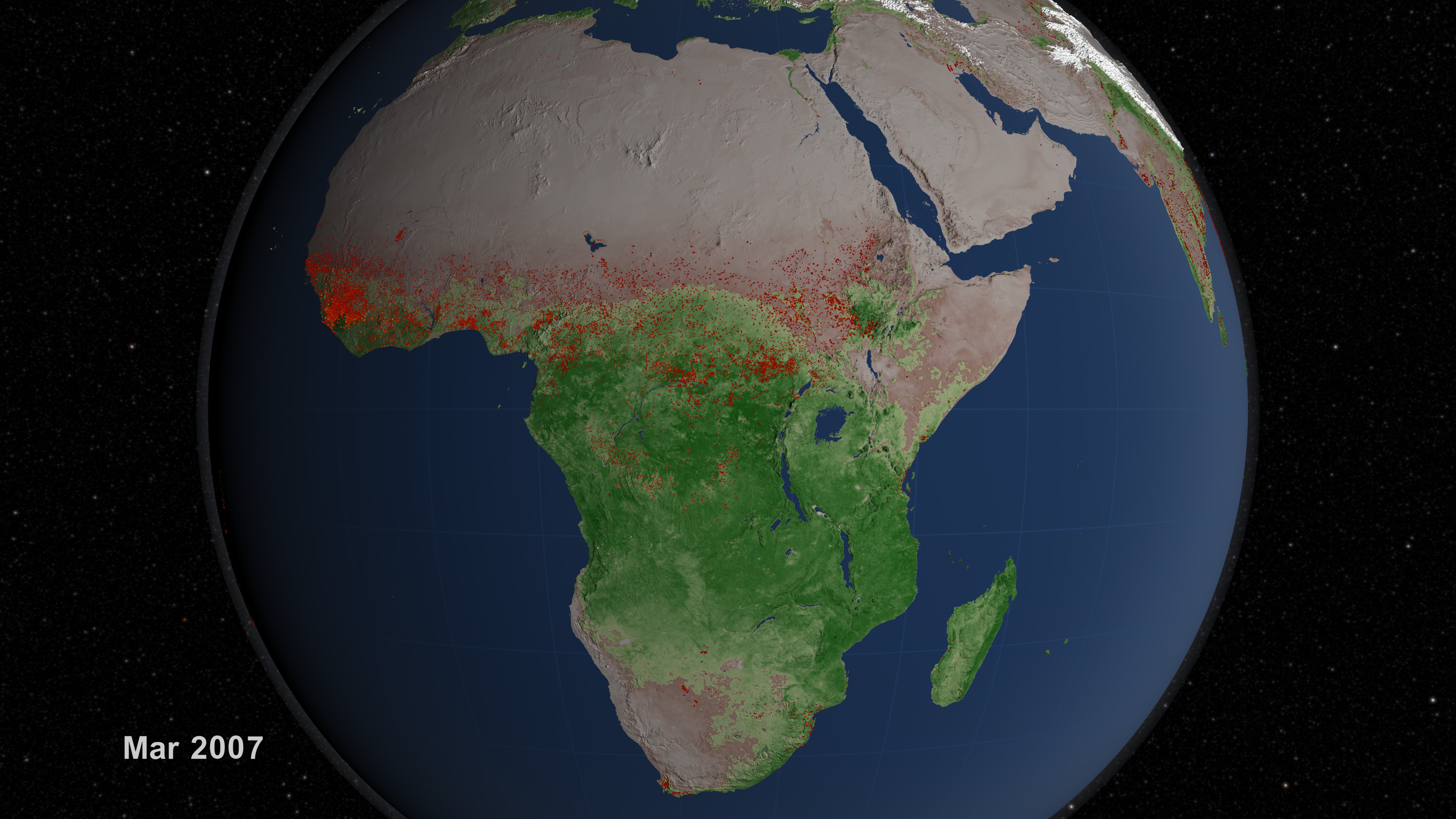
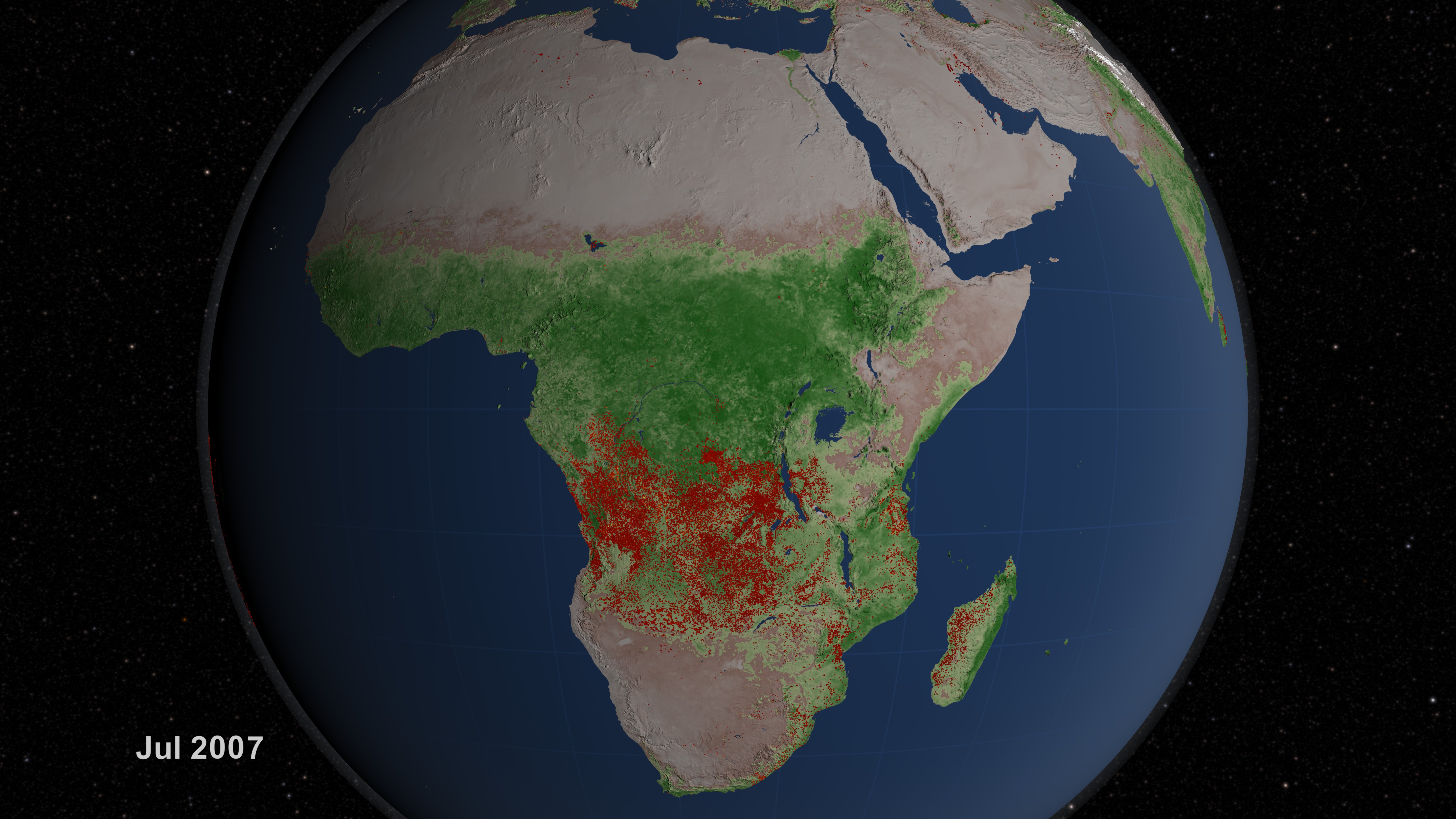
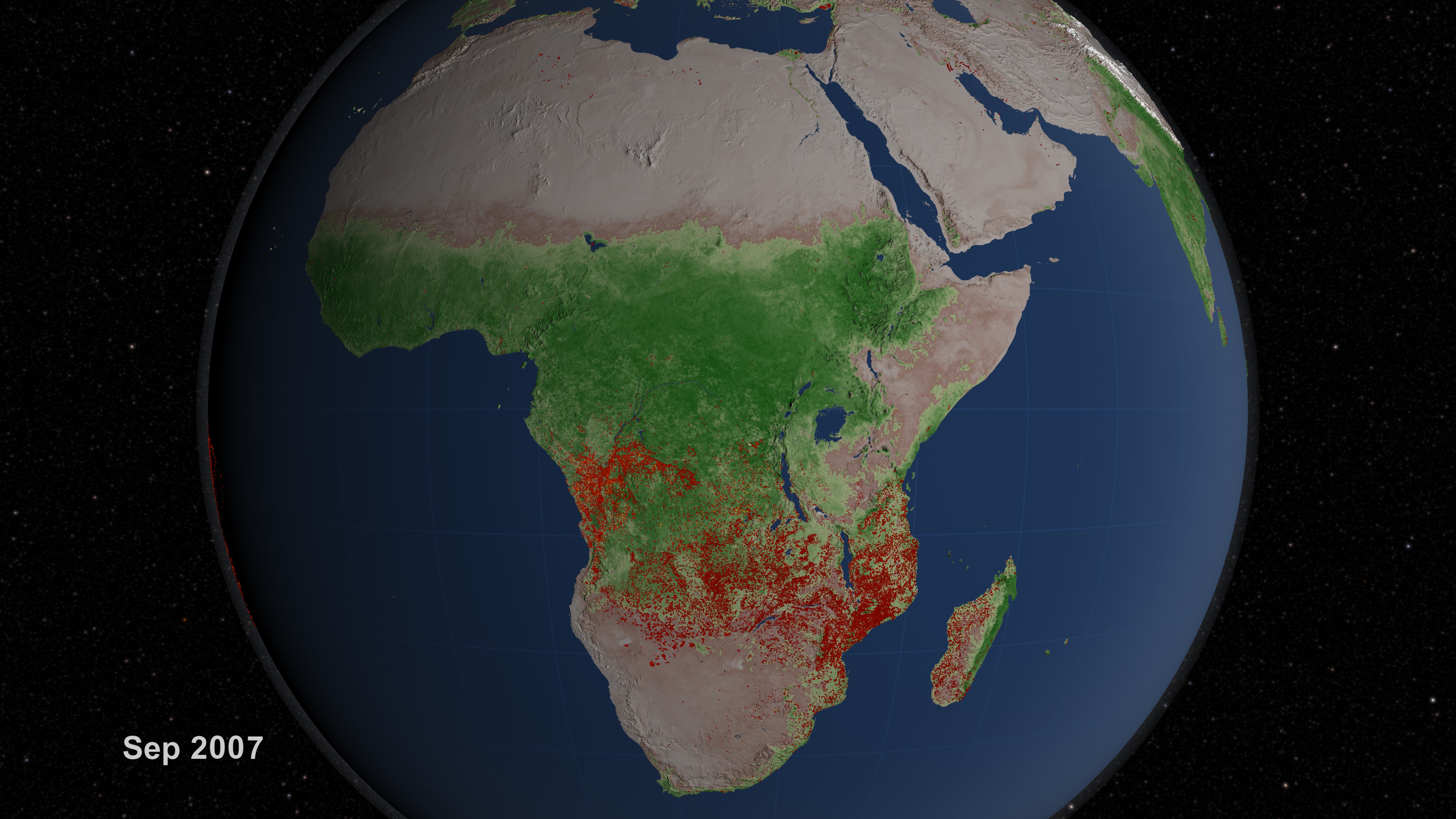
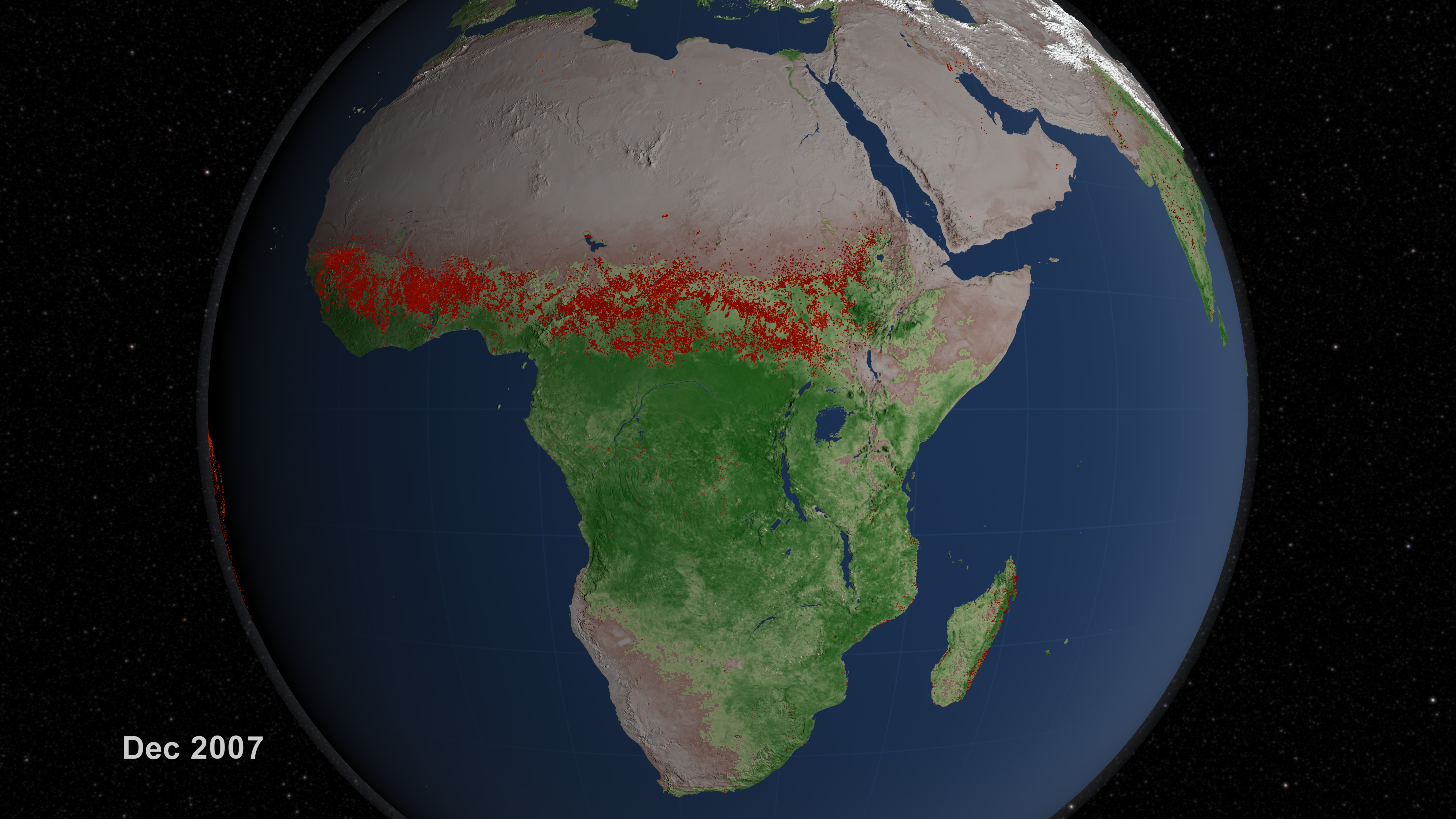
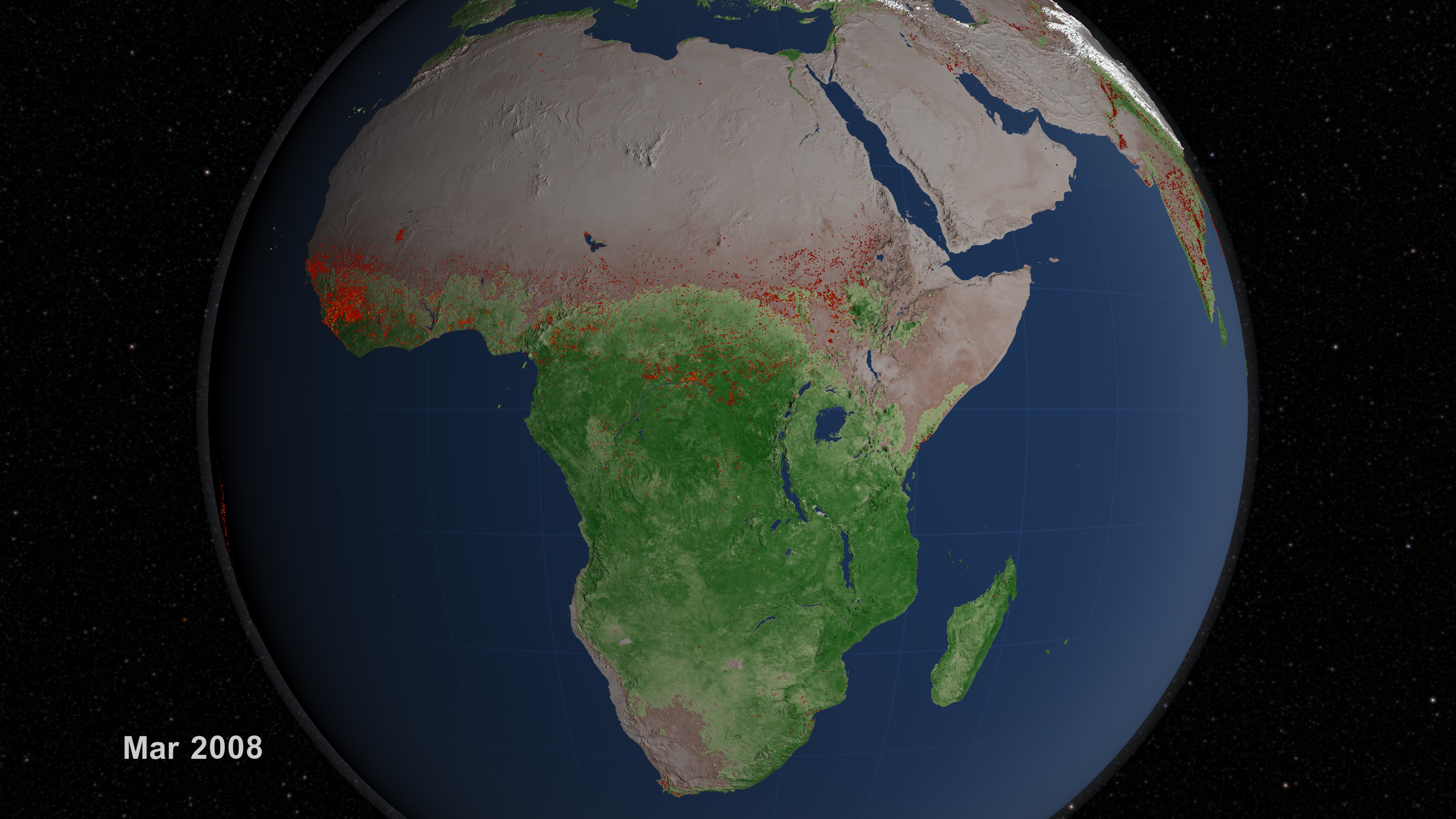
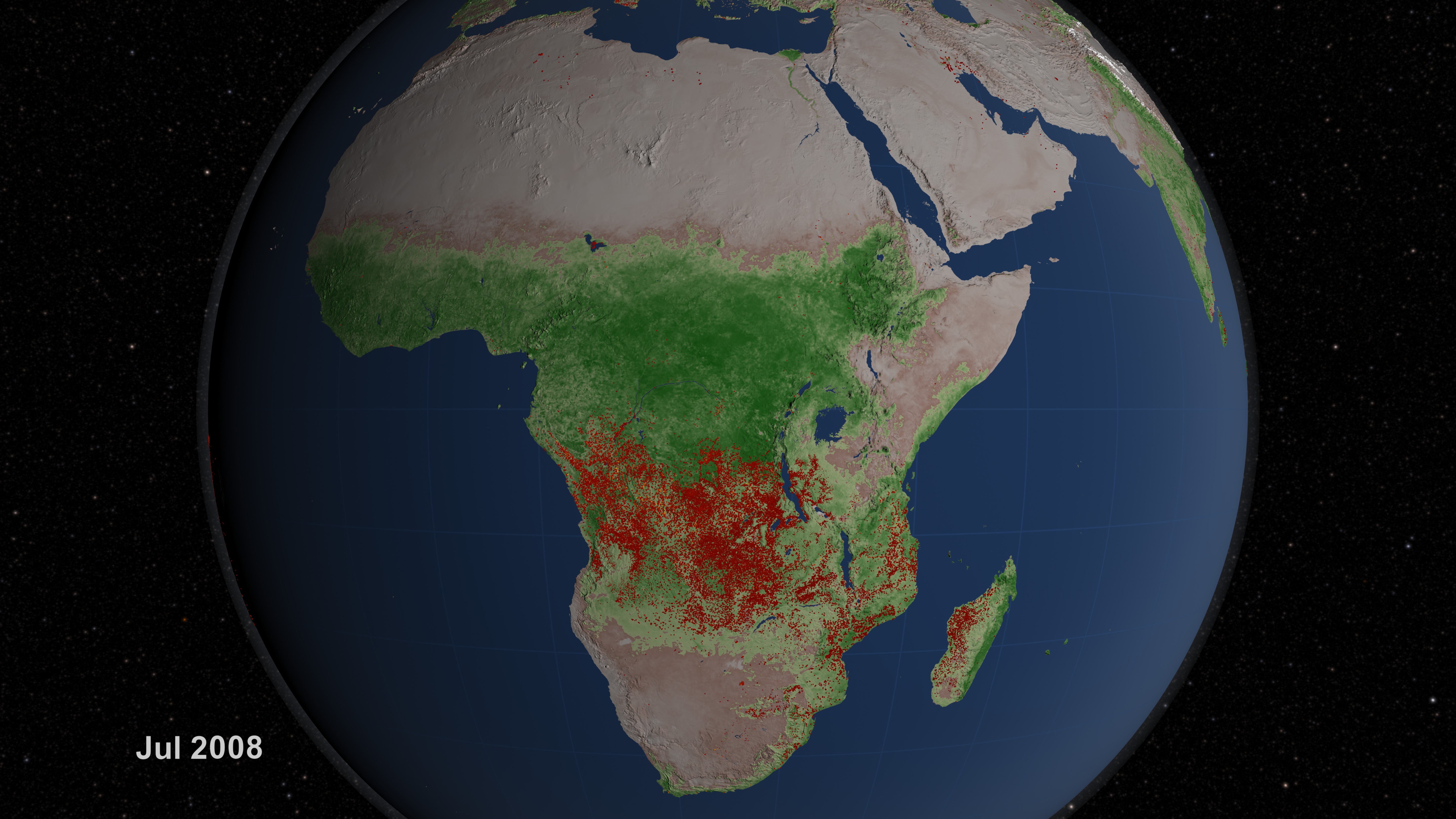
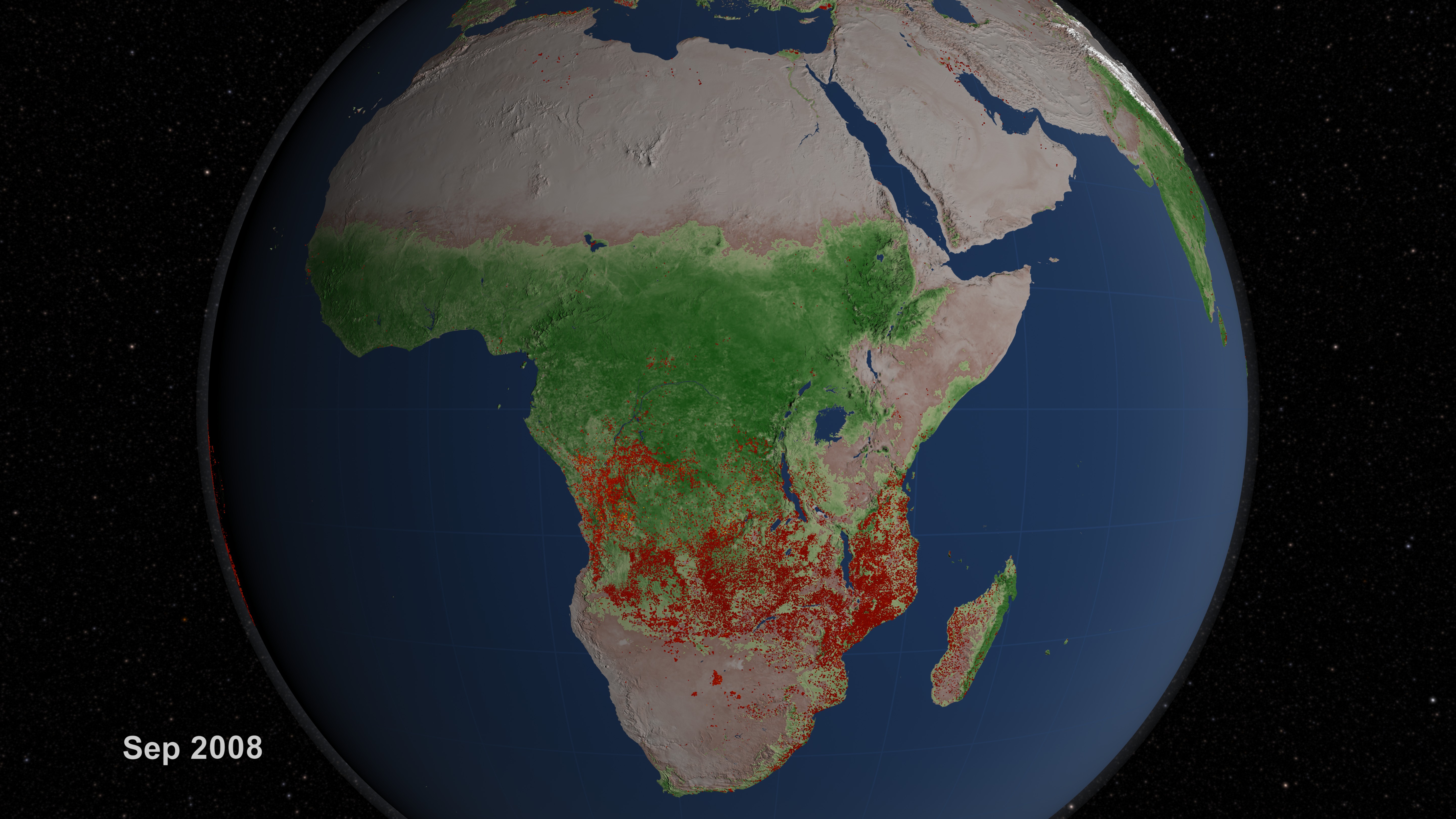
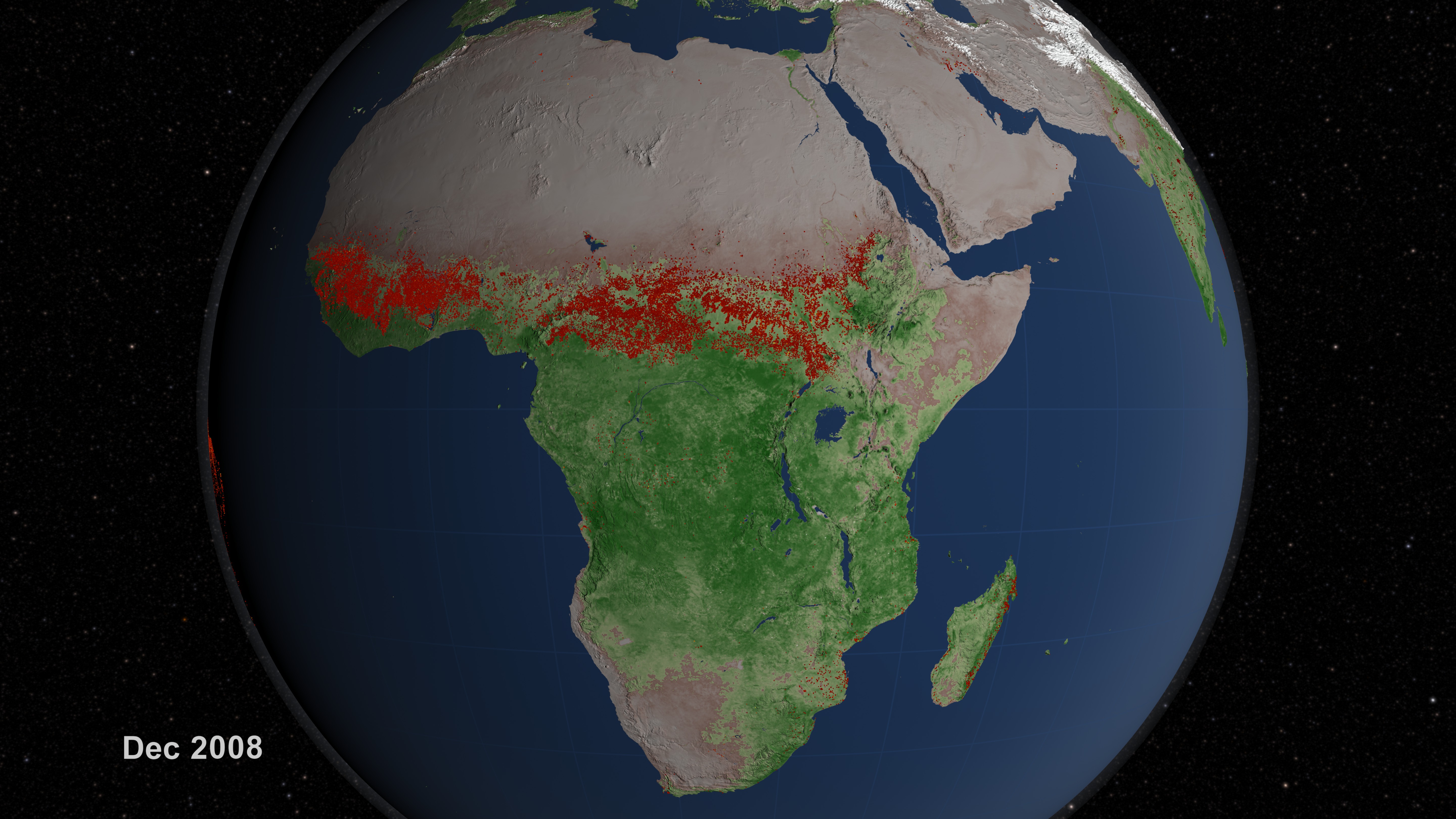

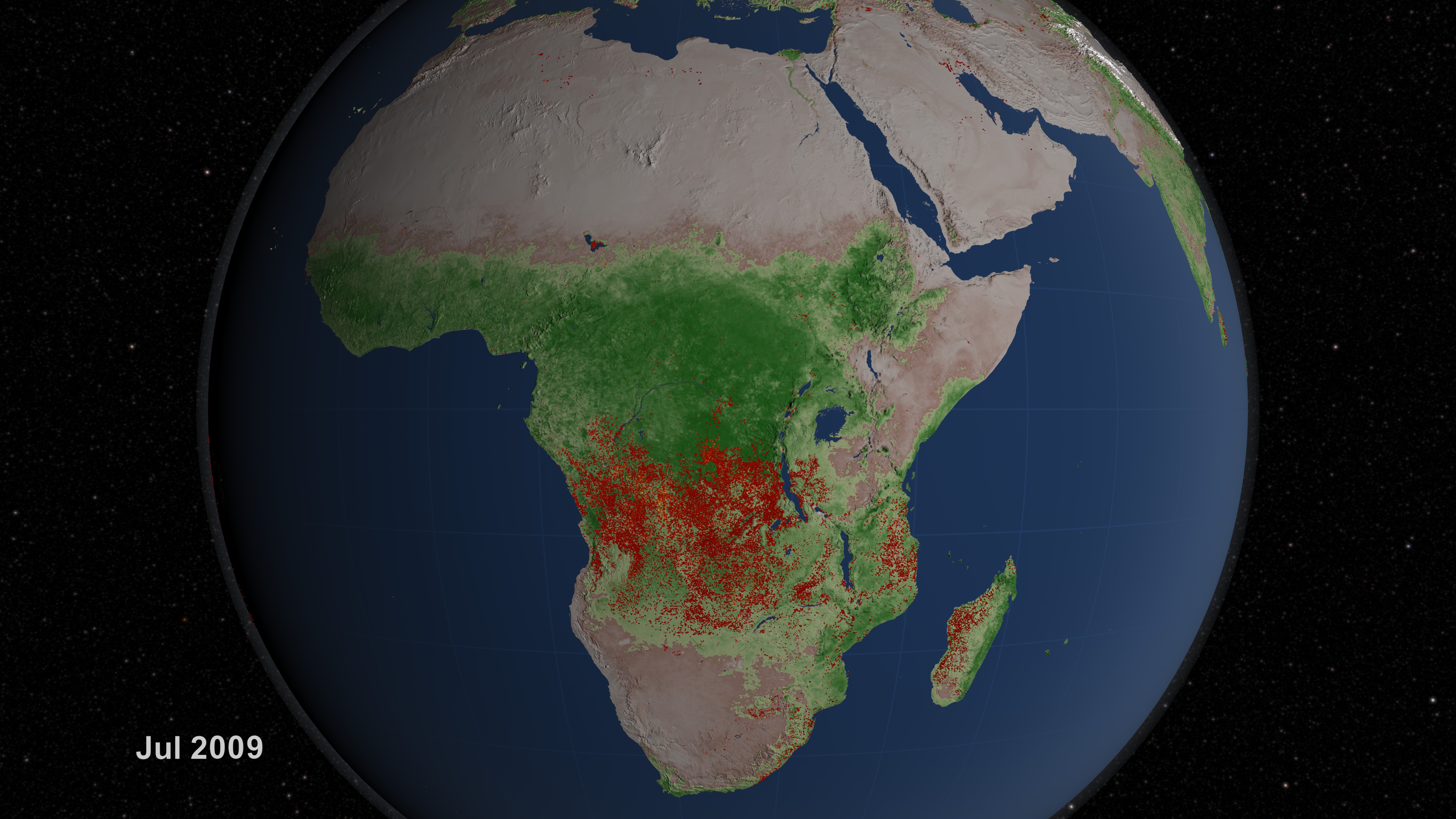
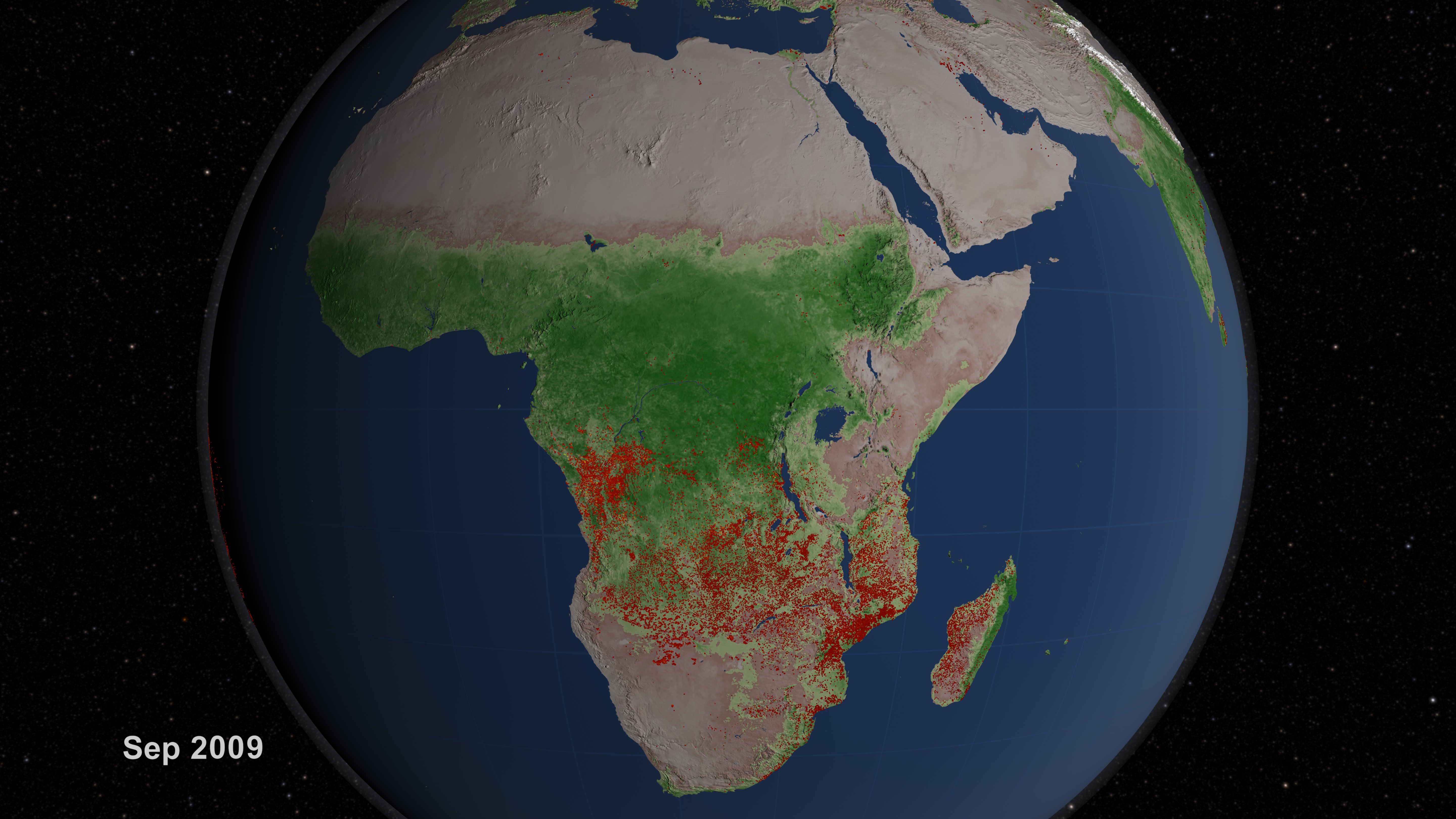
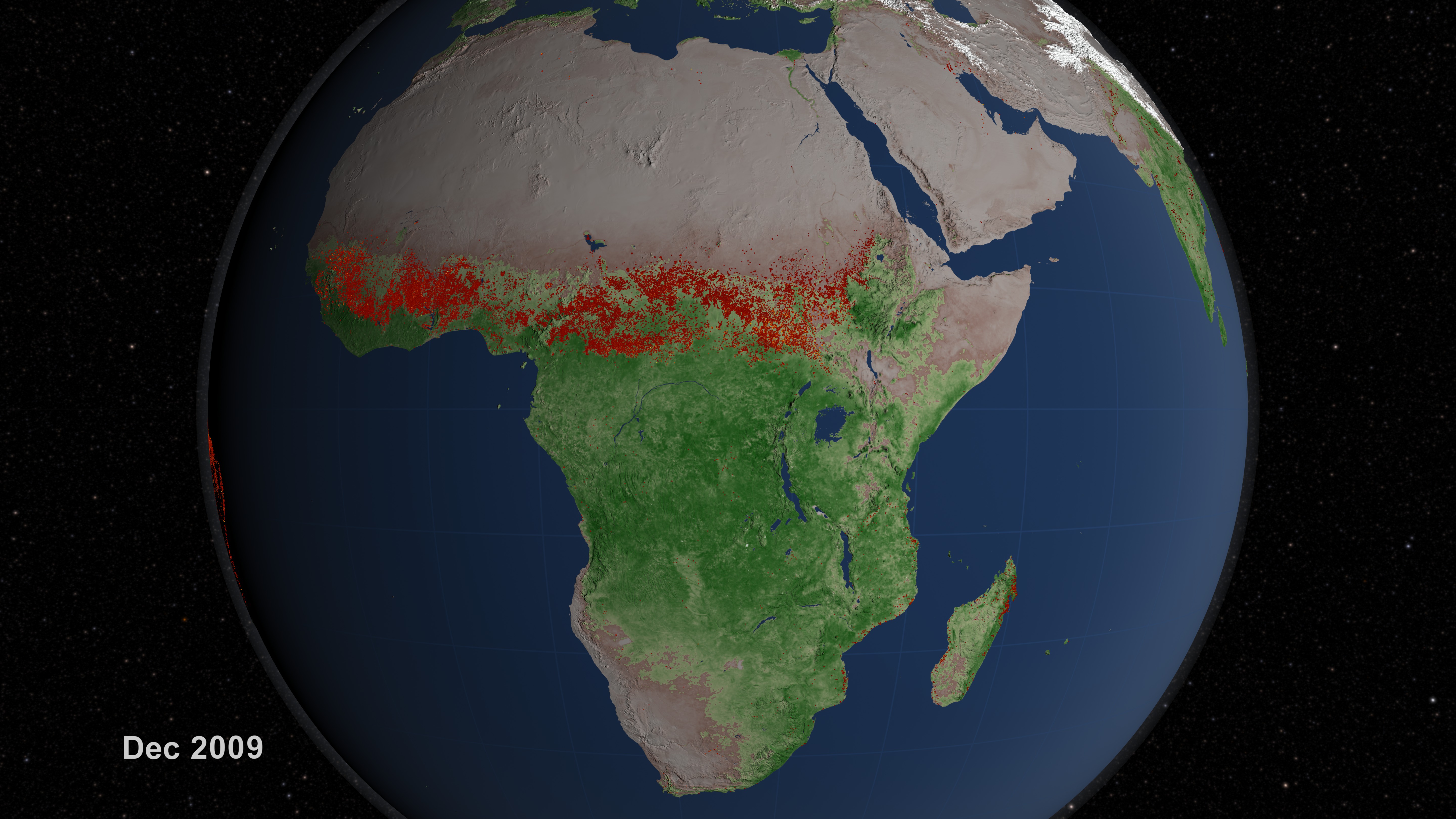
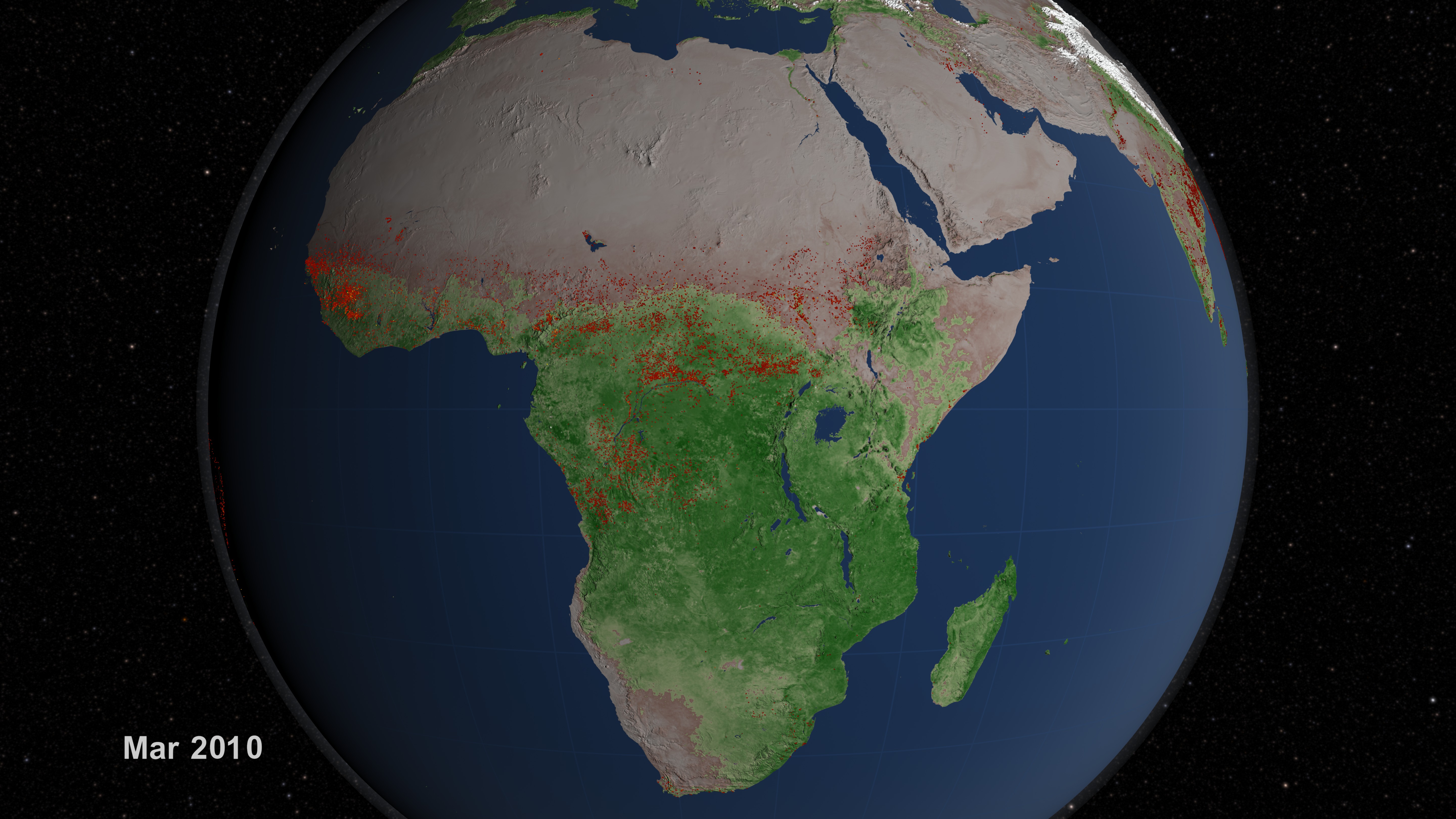
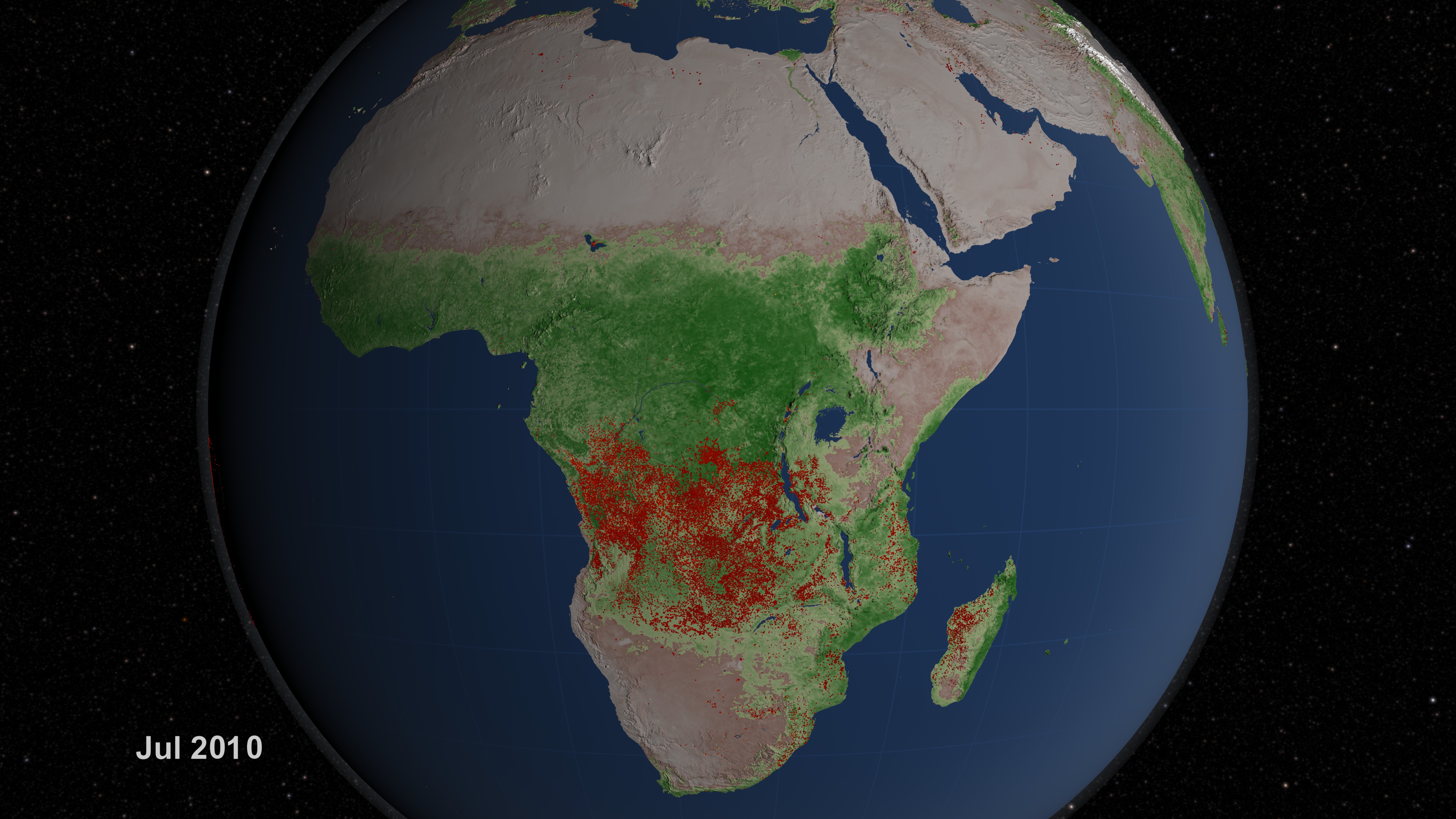
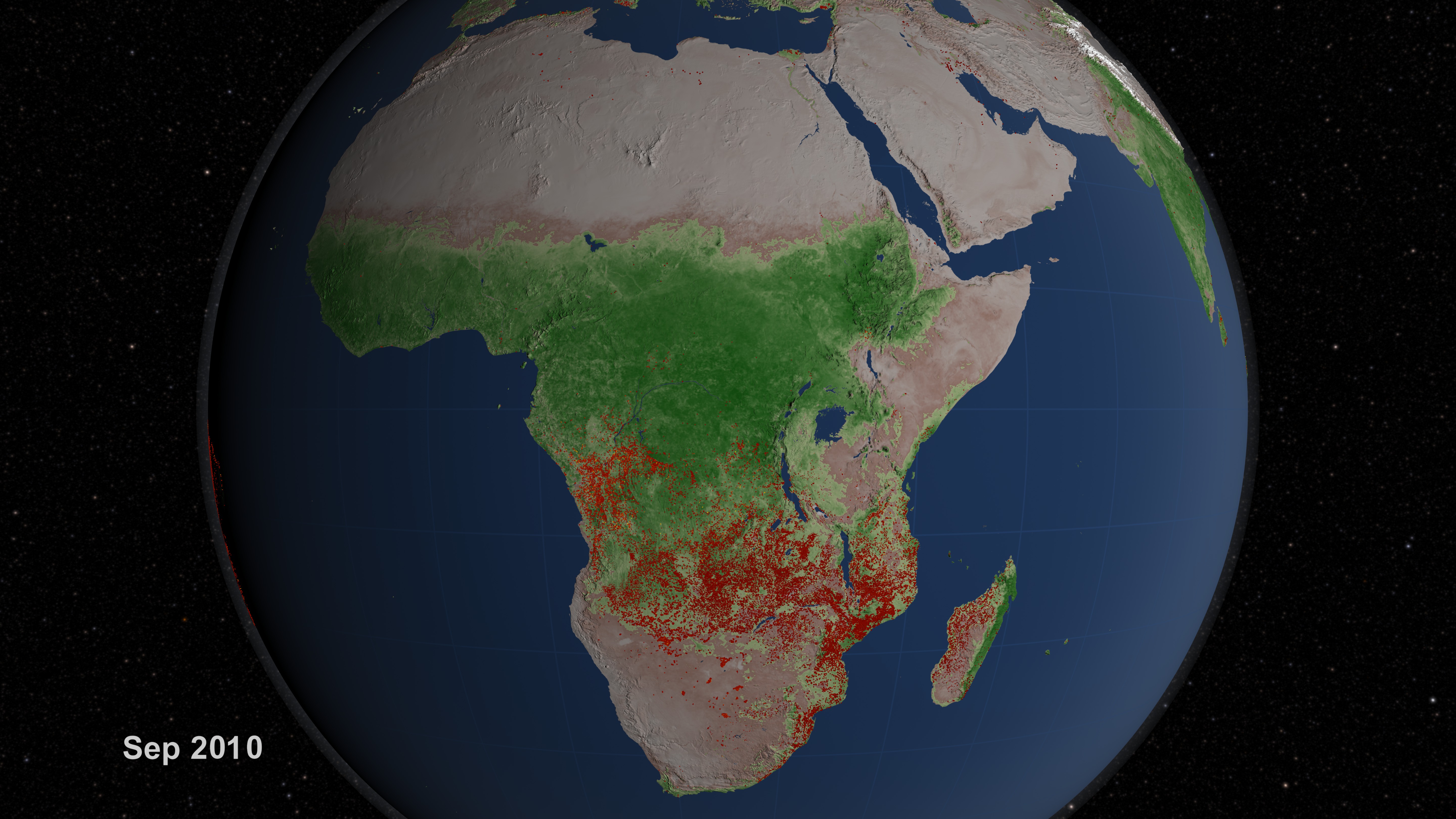
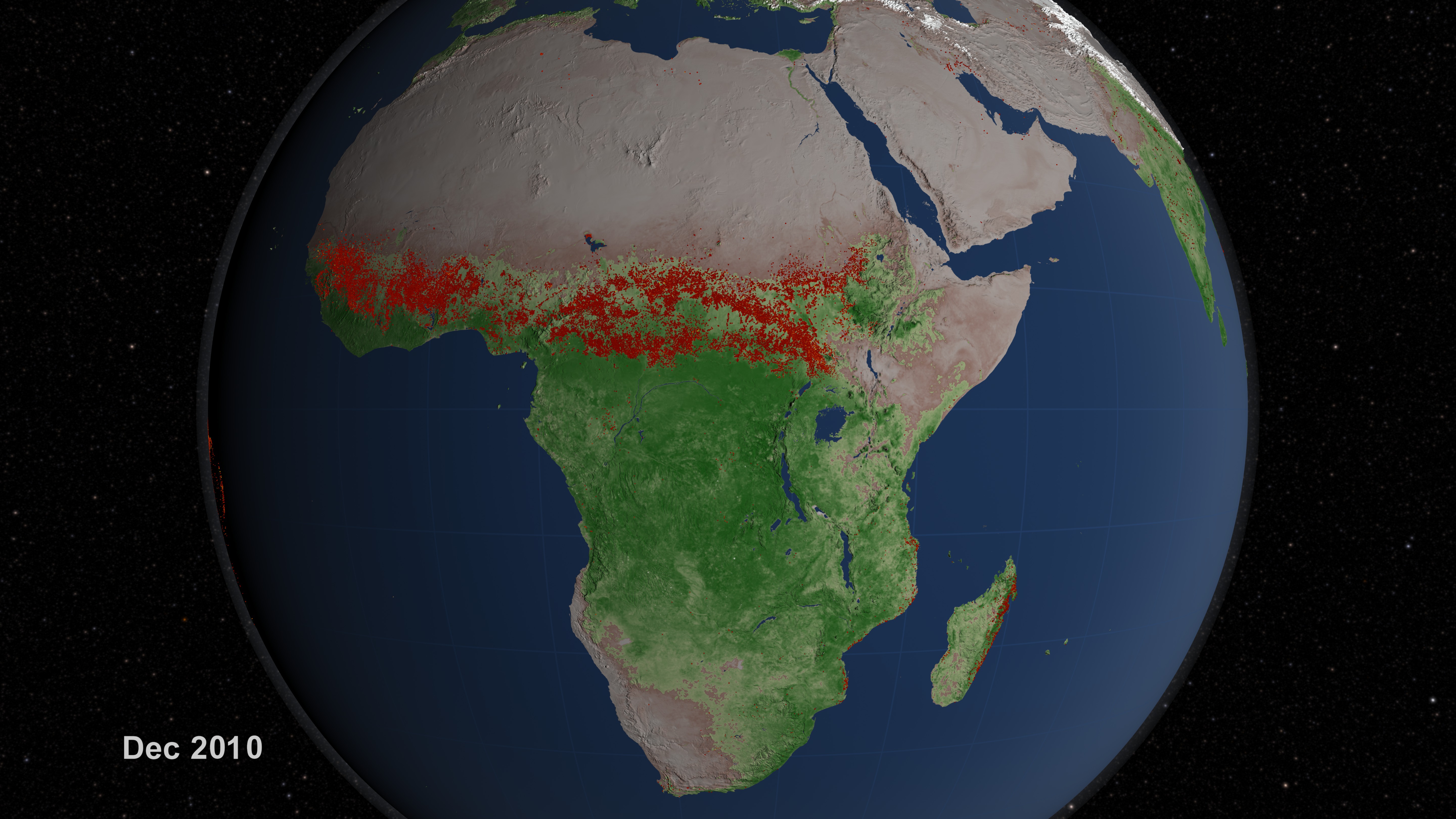
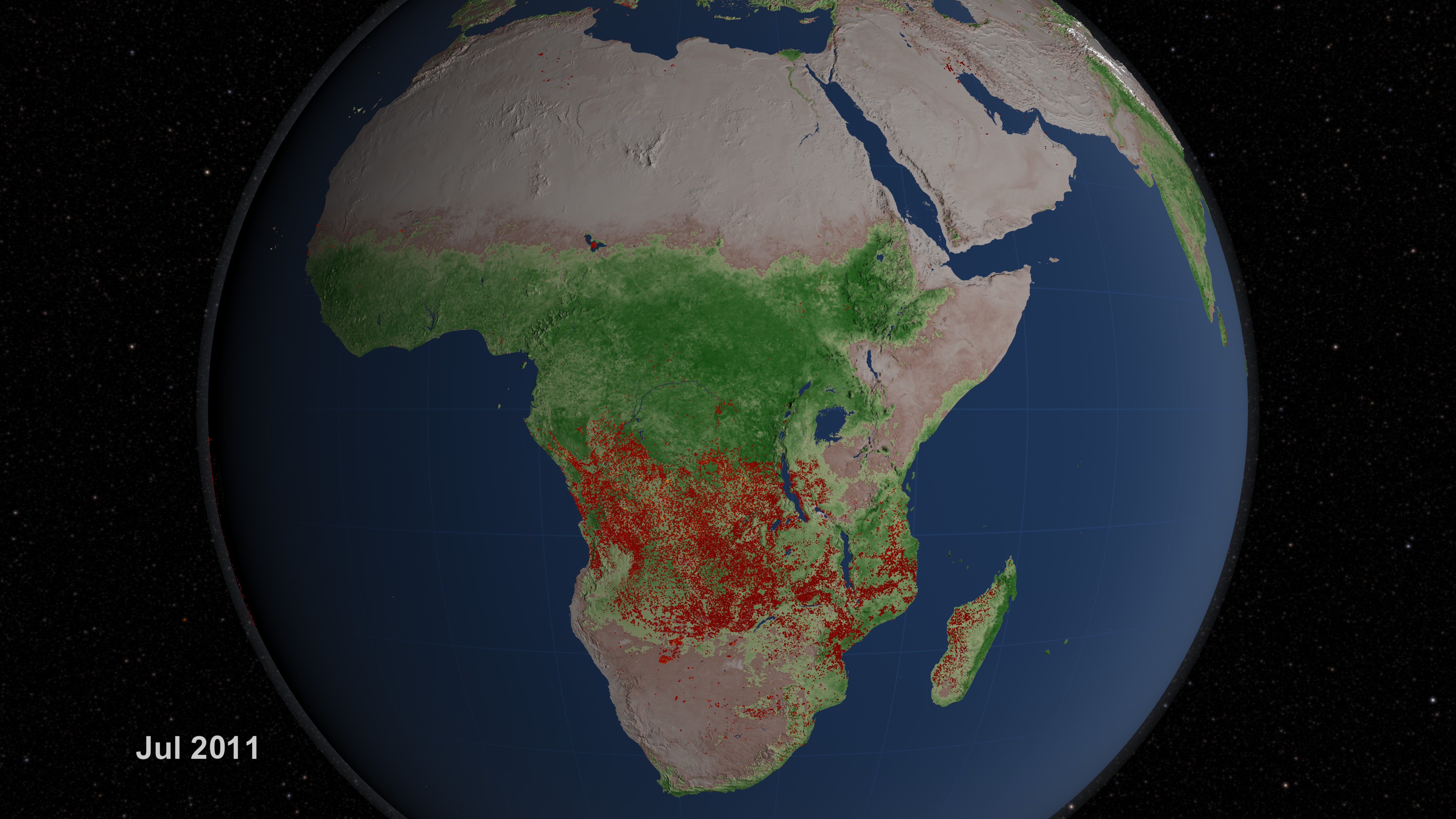

Related
Visualization Credits
Greg Shirah (NASA/GSFC): Animator
Kayvon Sharghi (USRA): Producer
Chris Justice (University of Maryland): Scientist
Louis Giglio (SSAI): Scientist
Luigi Boschetti Ph.D. (University Of Maryland College Park): Scientist
Adam P Voiland (Wyle Information Systems): Writer
NASA/Goddard Space Flight Center Scientific Visualization Studio
https://svs.gsfc.nasa.gov/3870
Mission:
Terra
Data Used:
Terra and Aqua/MODIS/Normalized Difference Vegetation Index (NDVI) also referred to as: NDVI
NASATerra and Aqua/MODIS/Fire Location
Fire location data courtesy of MODIS Rapid Response Project (NASA/GSFC and University of Maryland - http://rapidfire.sci.gsfc.nasa.gov)
Dates of Data Used:
July 2002 through July 2011
This item is part of these series:
Fires
Multisensor Fire Observations
NDVI
Agriculture Animations - Fires
Keywords:
DLESE >> Atmospheric science
DLESE >> Forestry
SVS >> HDTV
DLESE >> Natural hazards
GCMD >> Earth Science >> Biosphere >> Ecological Dynamics >> Fire Occurrence
GCMD >> Earth Science >> Human Dimensions >> Natural Hazards >> Fires
SVS >> For Educators
SVS >> Ecosystems
SVS >> Natural Disaster
NASA Science >> Earth
NASA Earth Science Focus Areas >> Carbon Cycle and Ecosystems
GCMD keywords can be found on the Internet with the following citation: Olsen, L.M., G. Major, K. Shein, J. Scialdone, S. Ritz, T. Stevens, M. Morahan, A. Aleman, R. Vogel, S. Leicester, H. Weir, M. Meaux, S. Grebas, C.Solomon, M. Holland, T. Northcutt, R. A. Restrepo, R. Bilodeau, 2013. NASA/Global Change Master Directory (GCMD) Earth Science Keywords. Version 8.0.0.0.0
